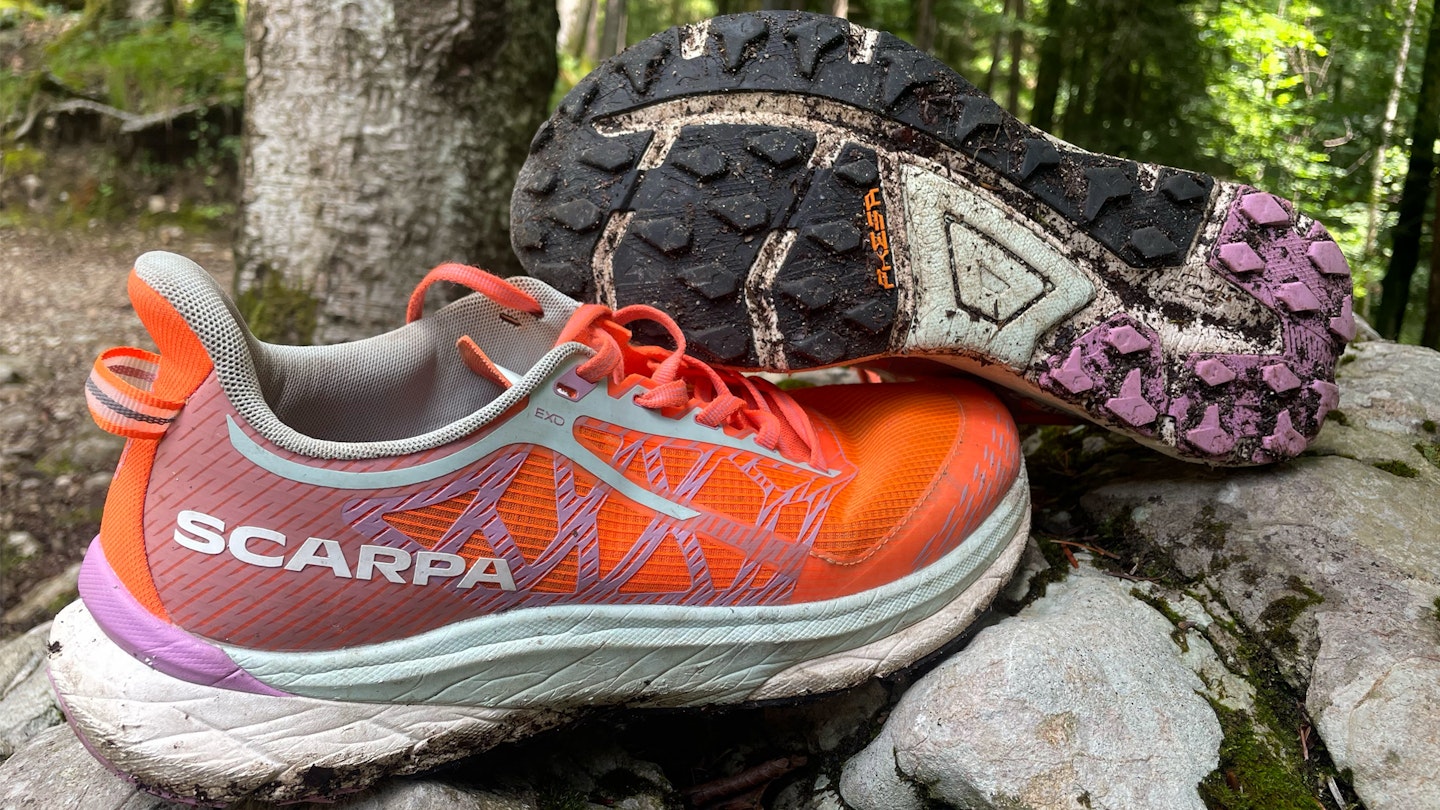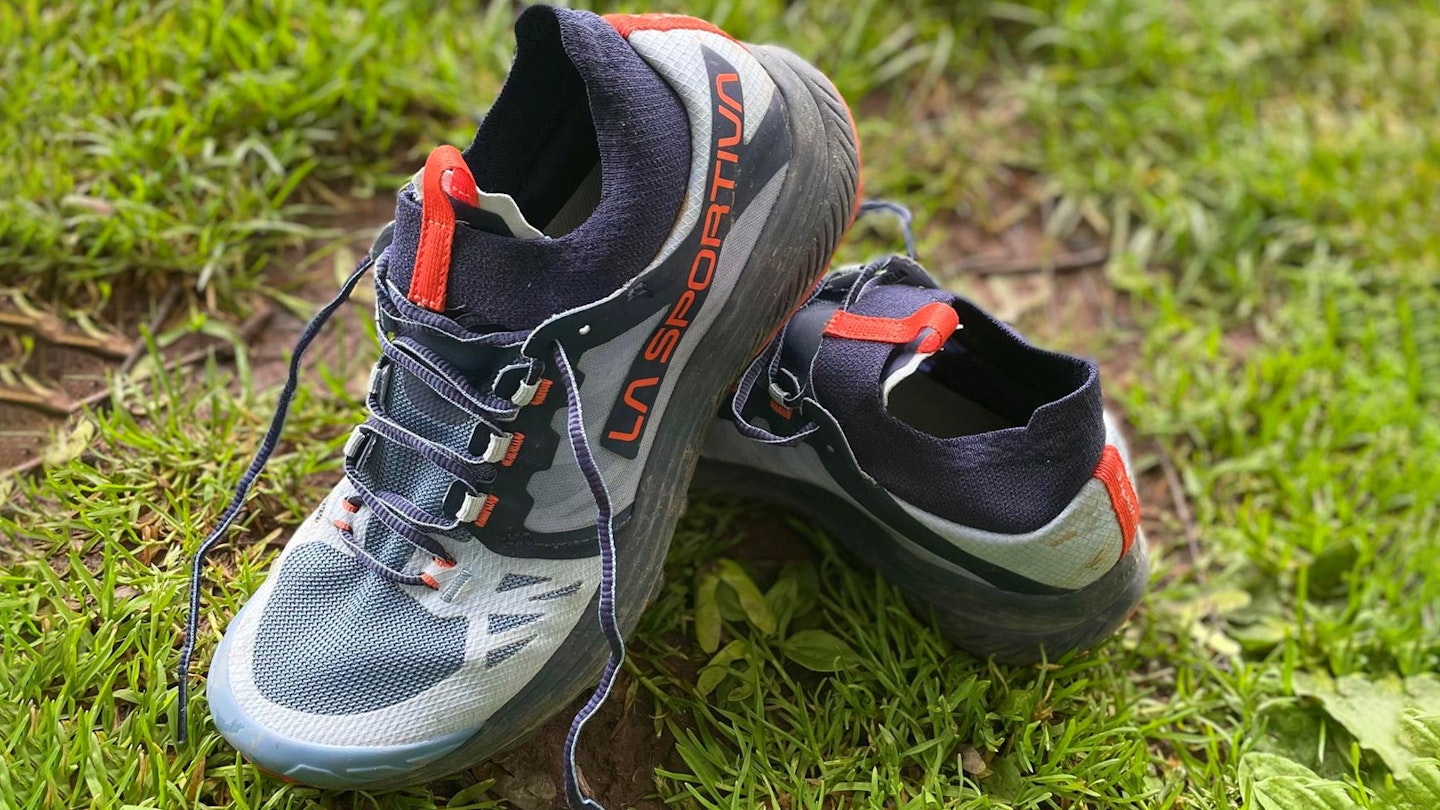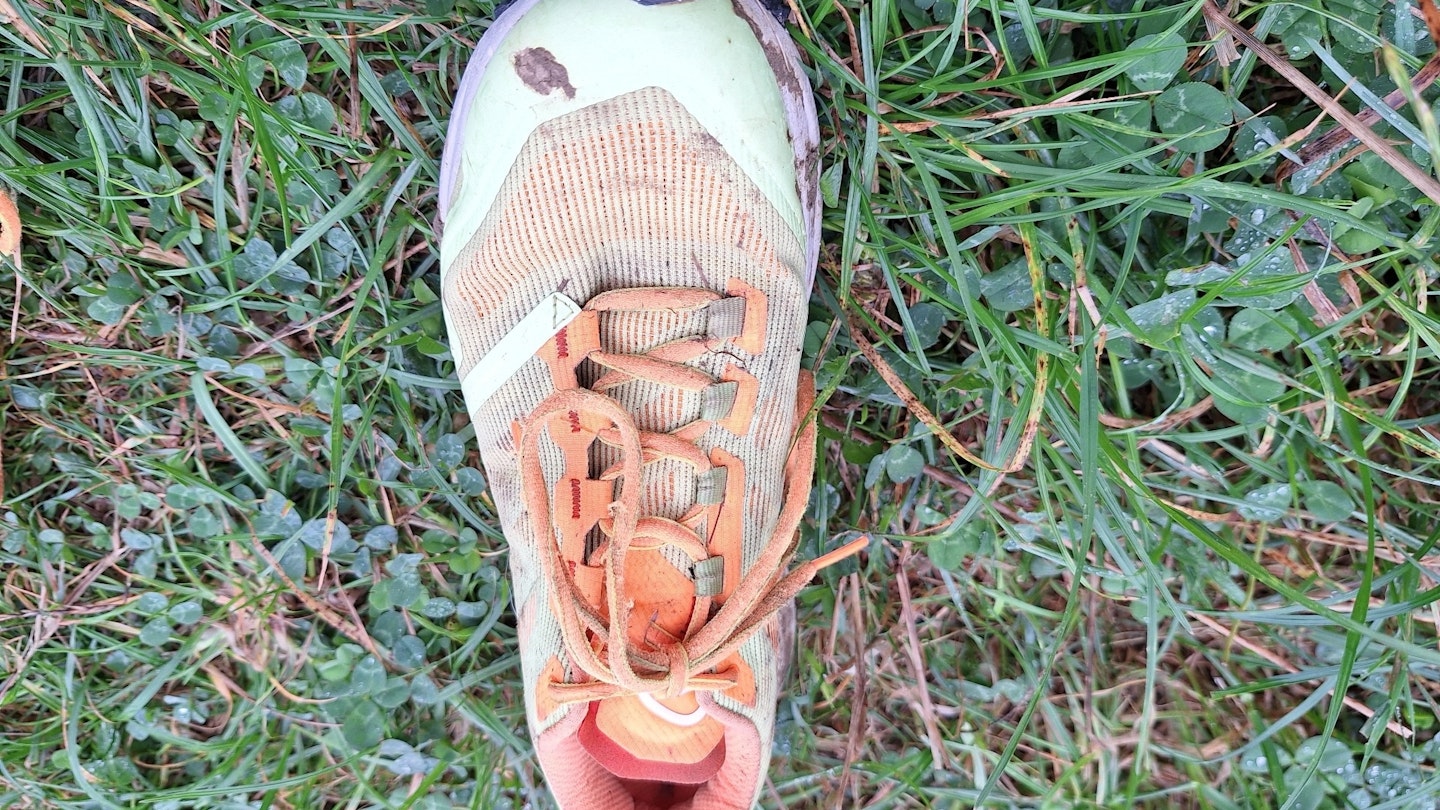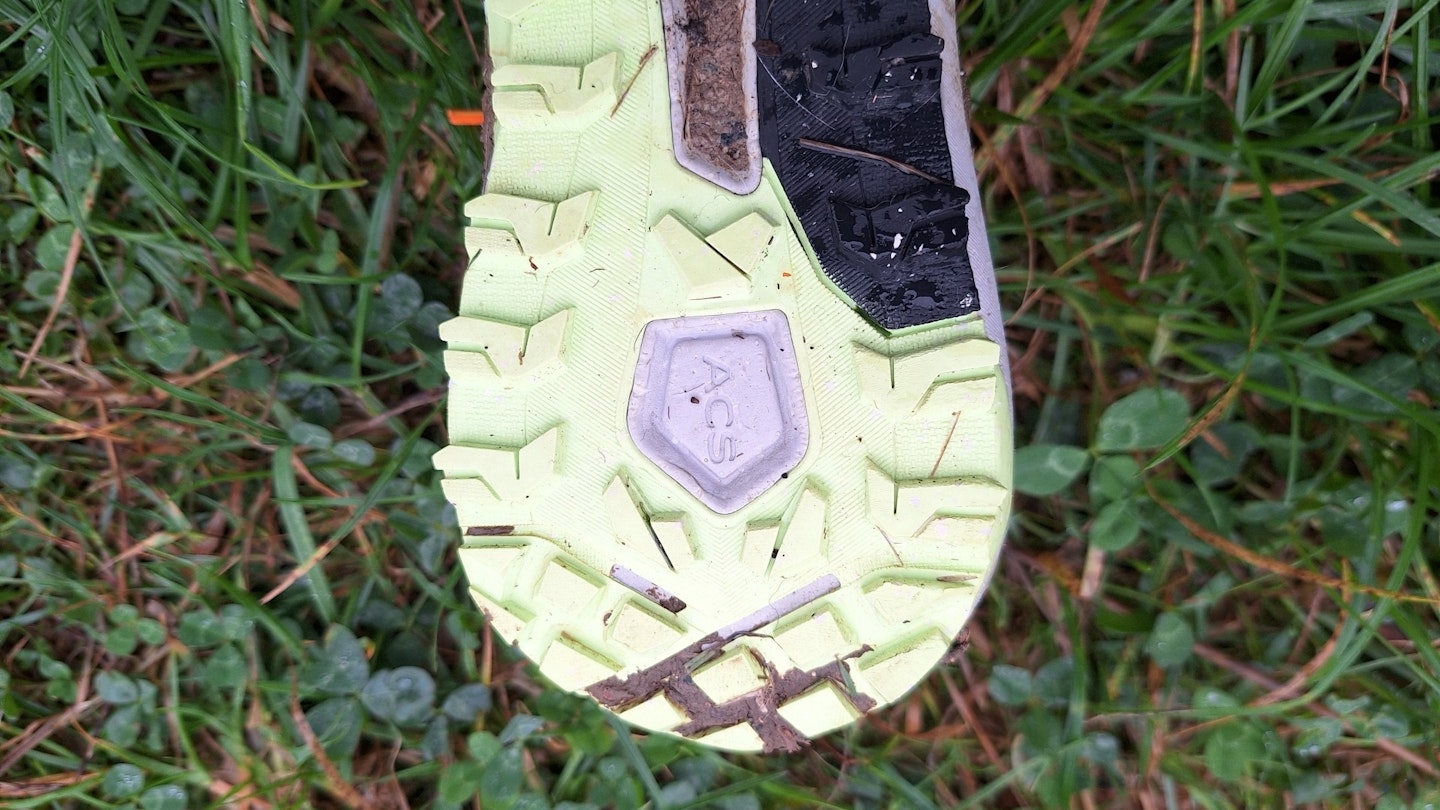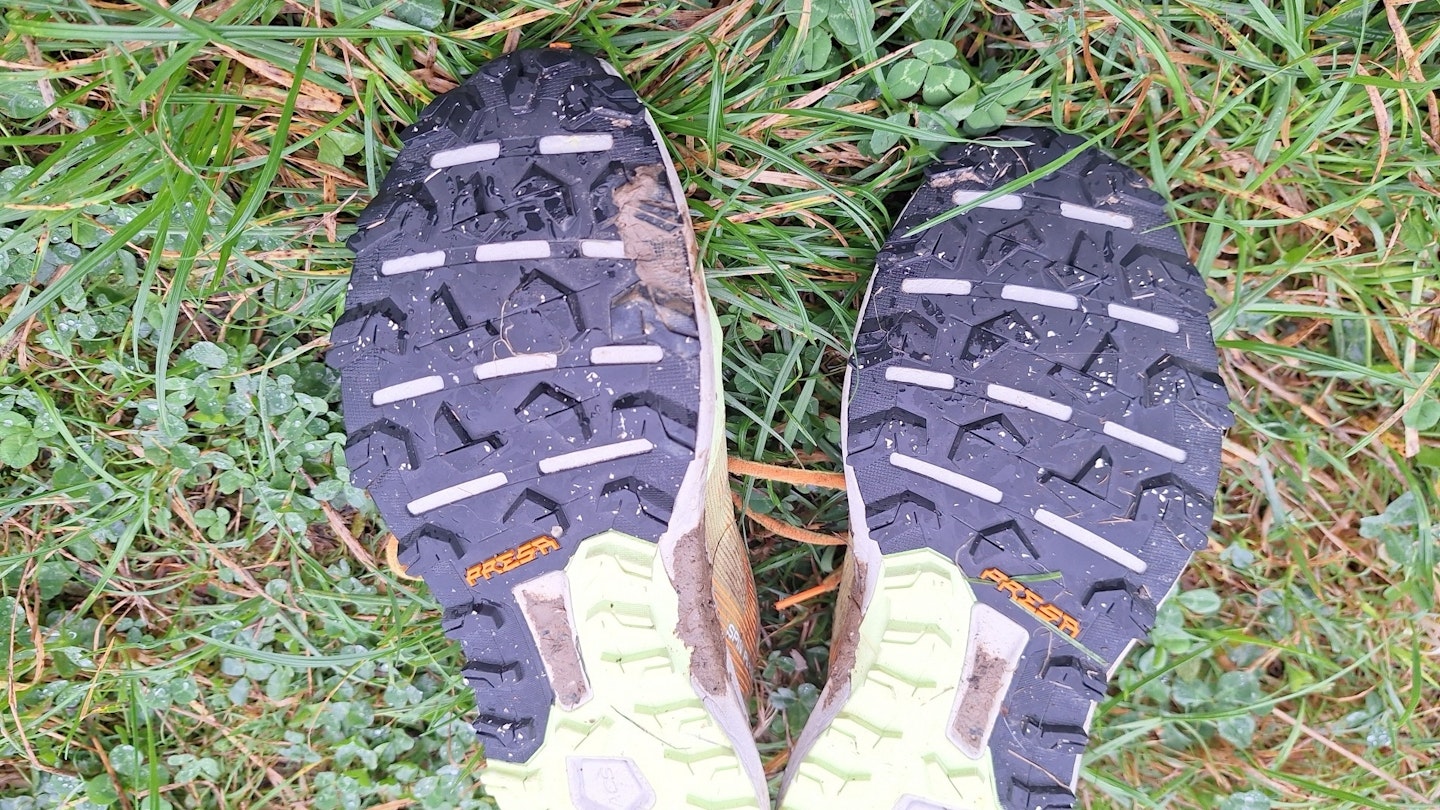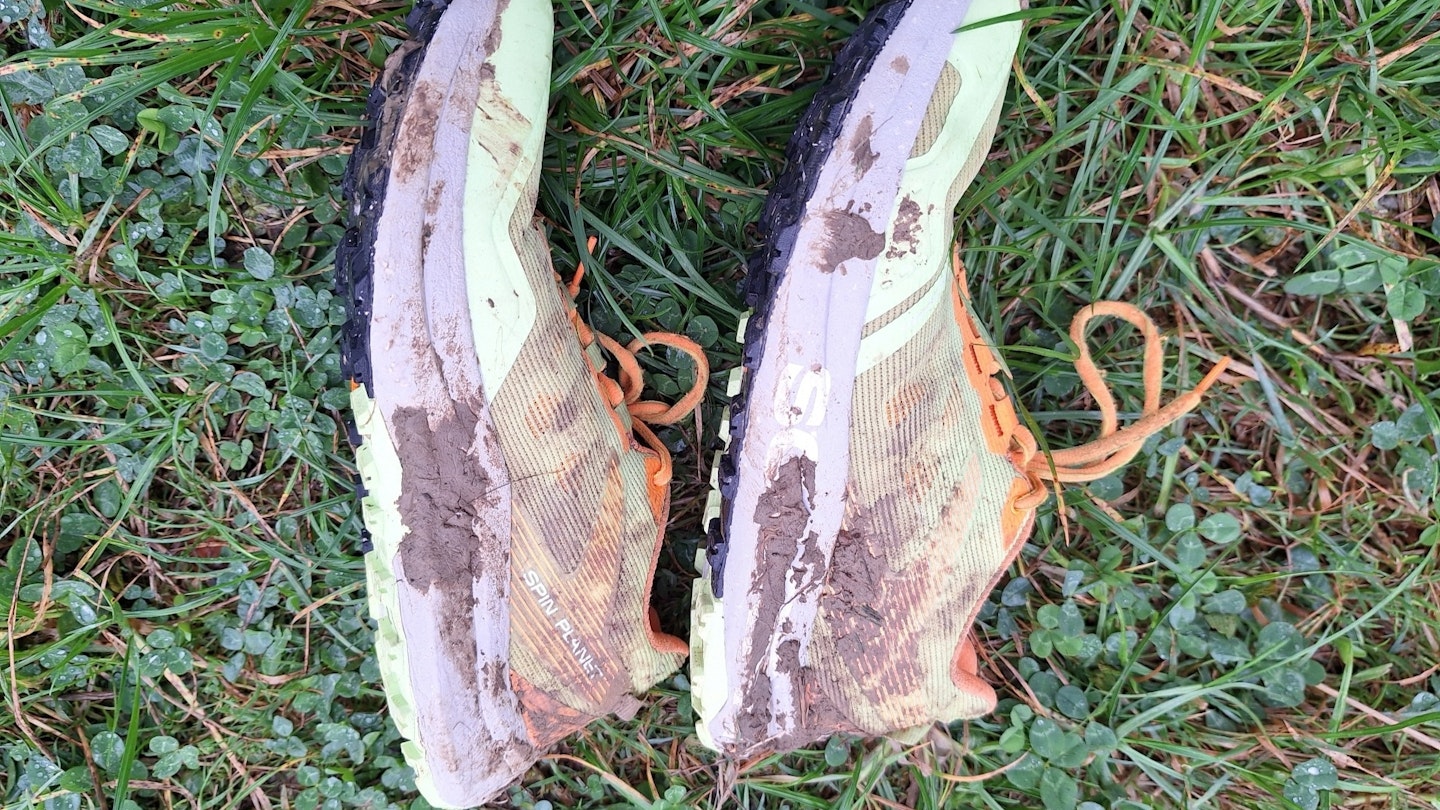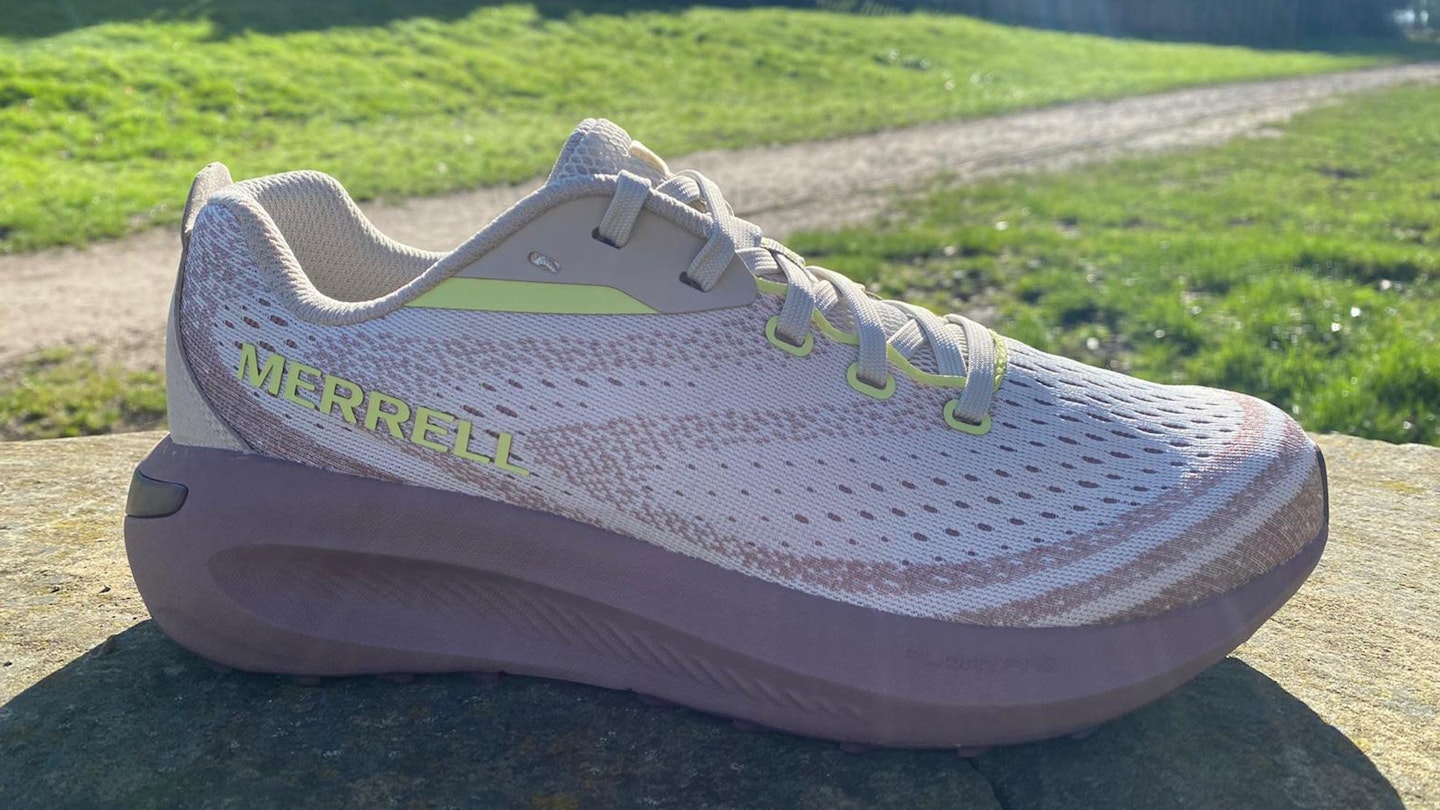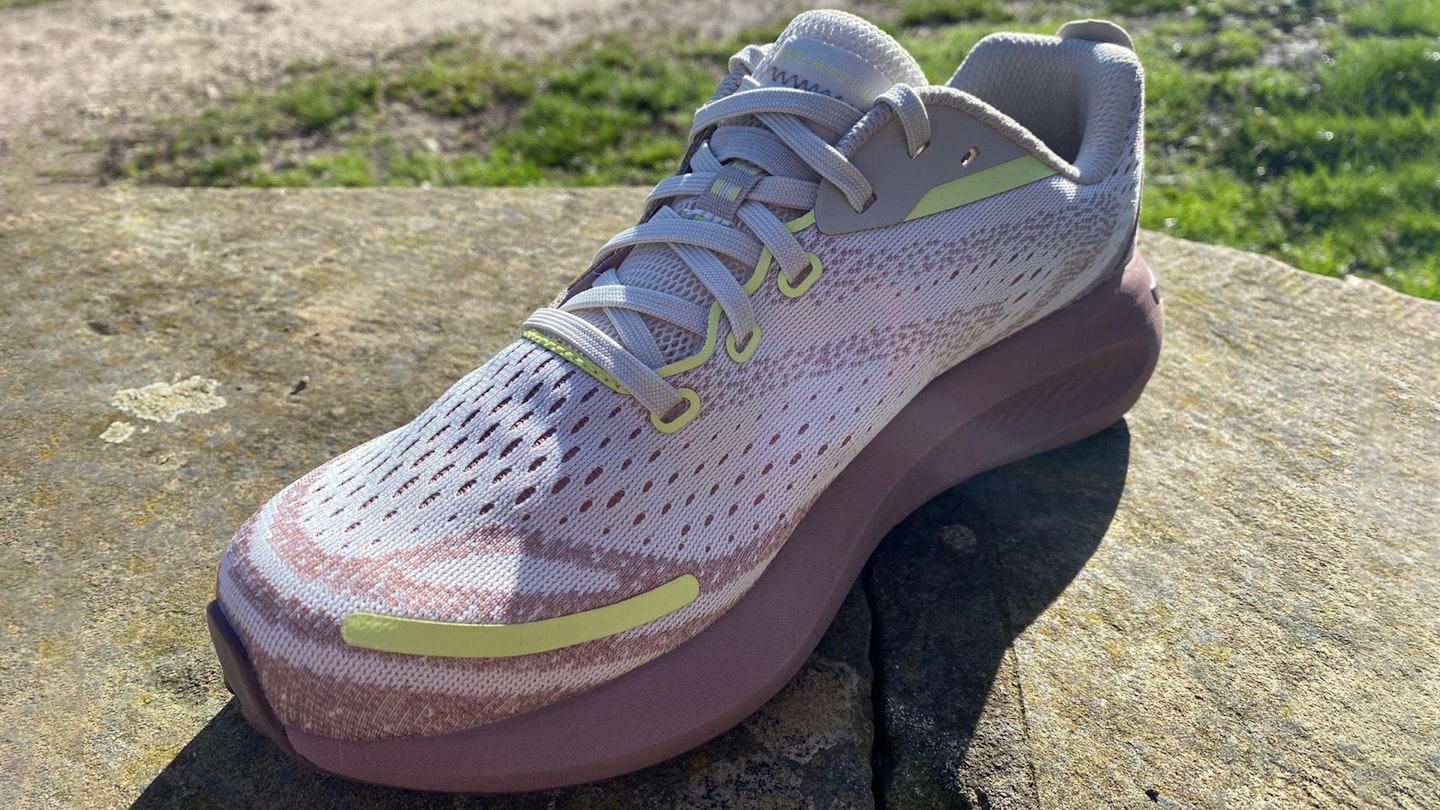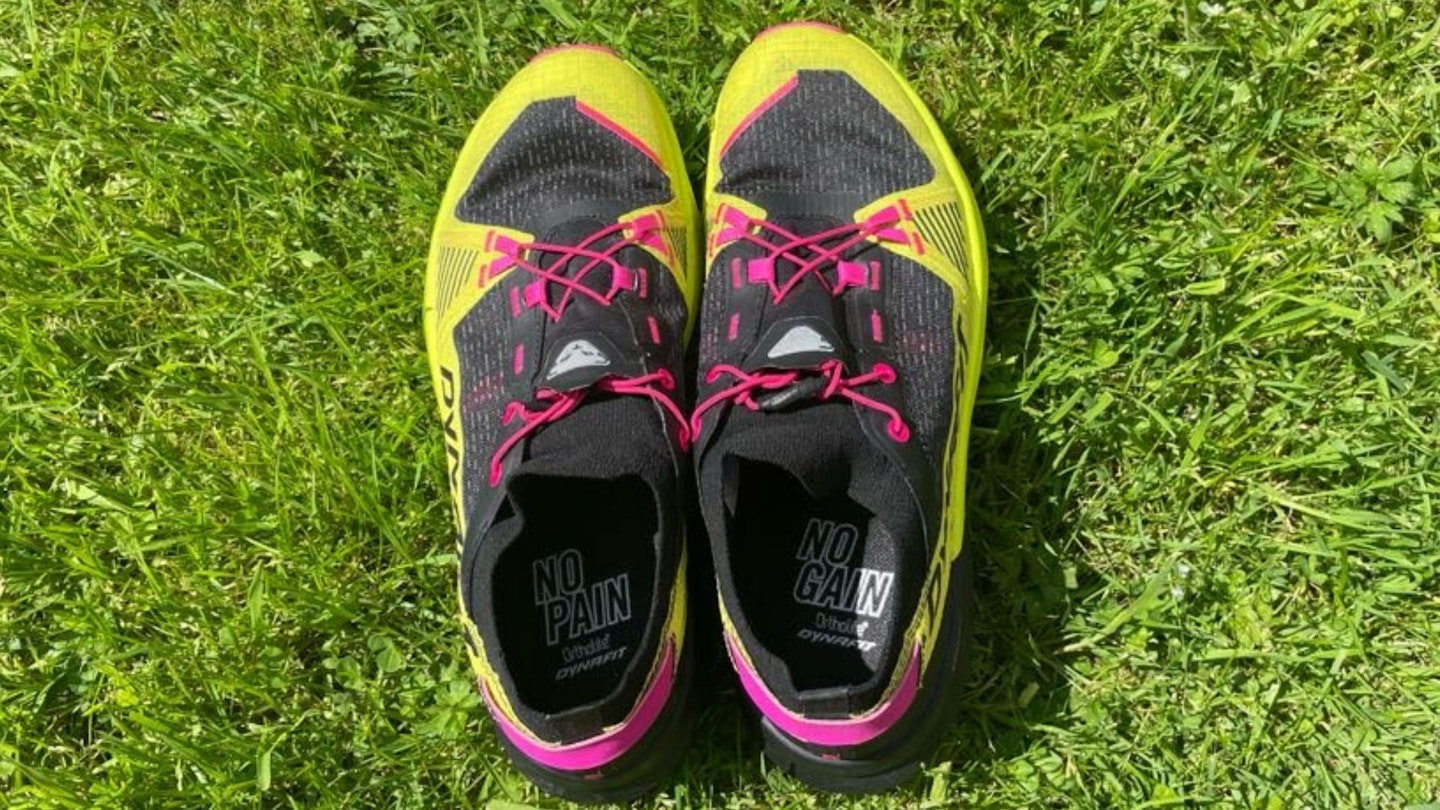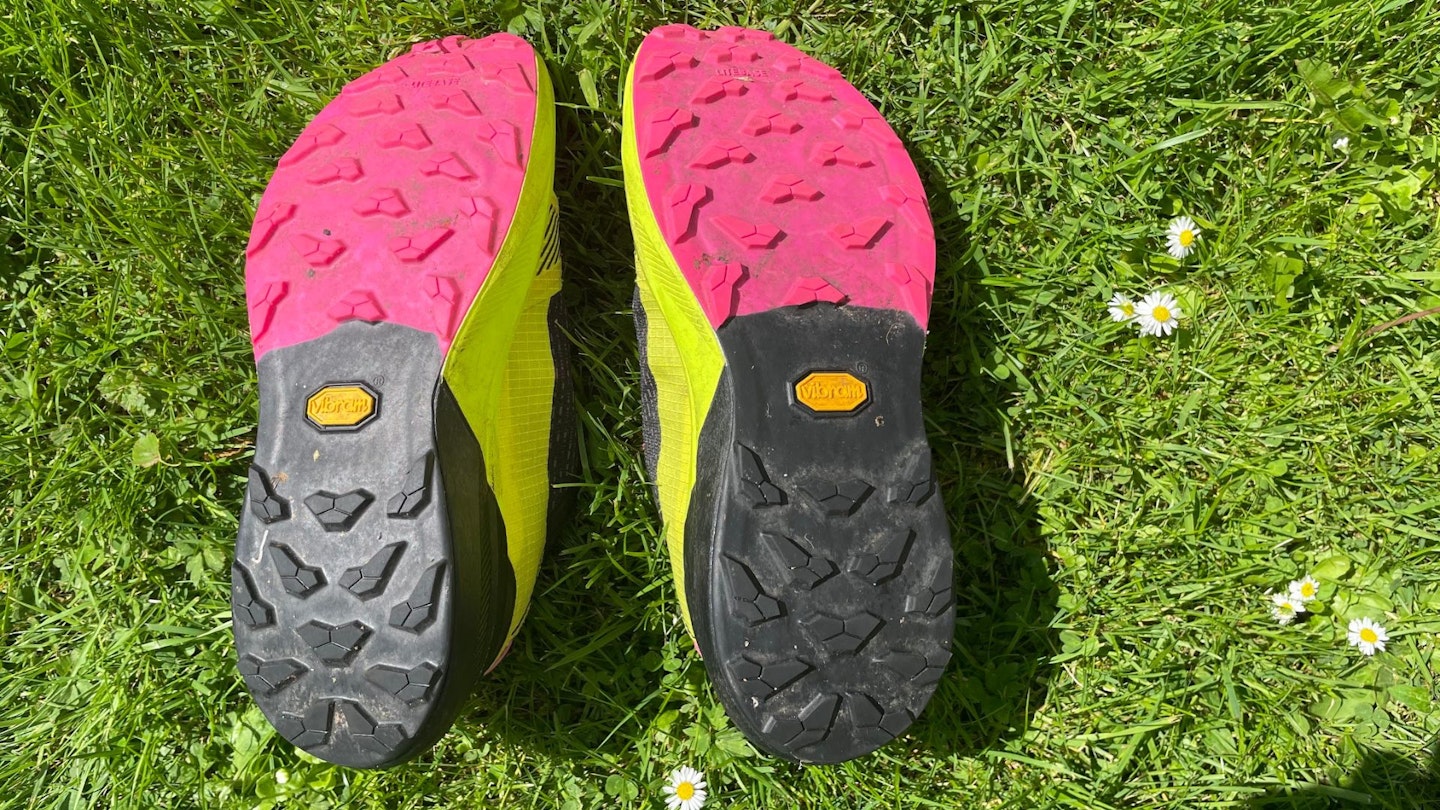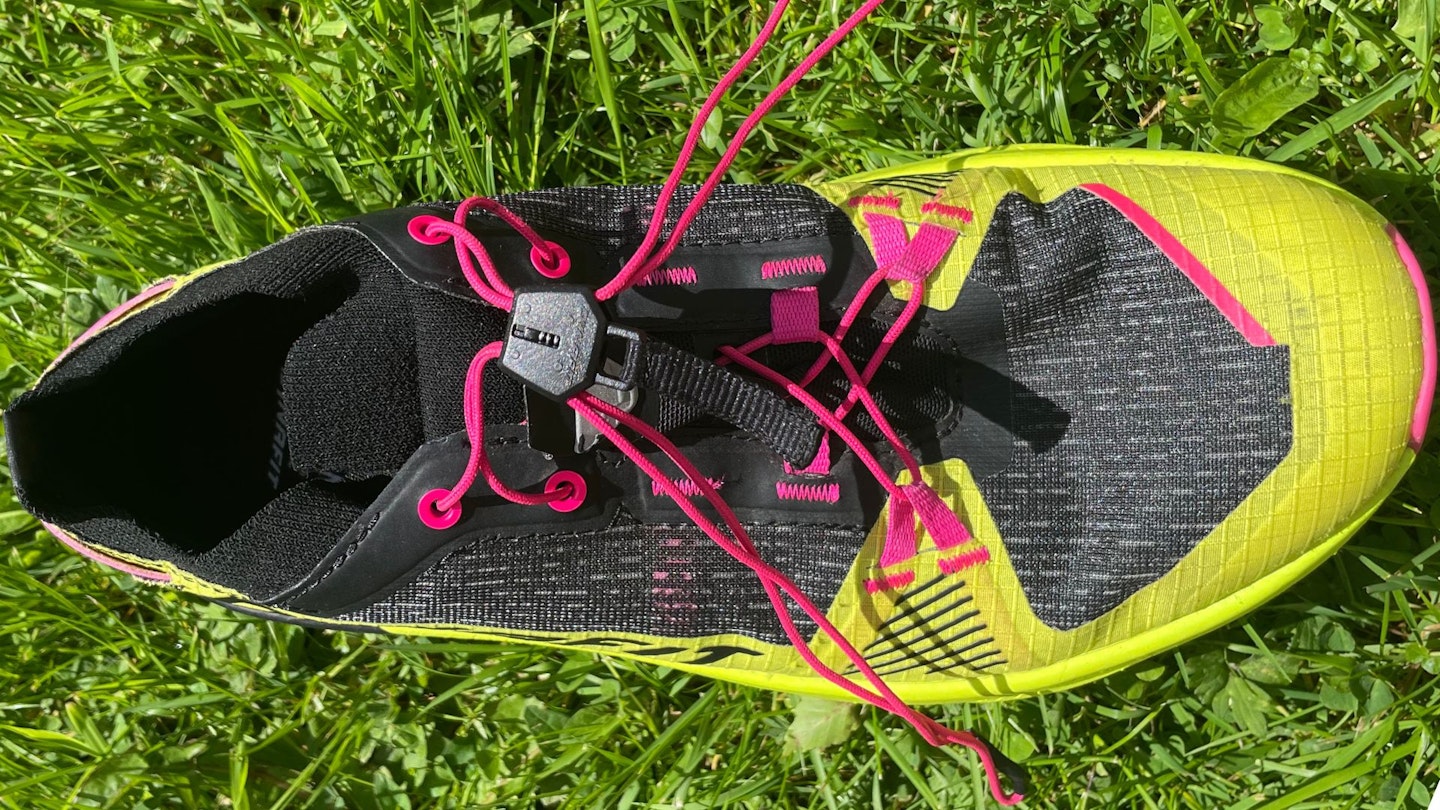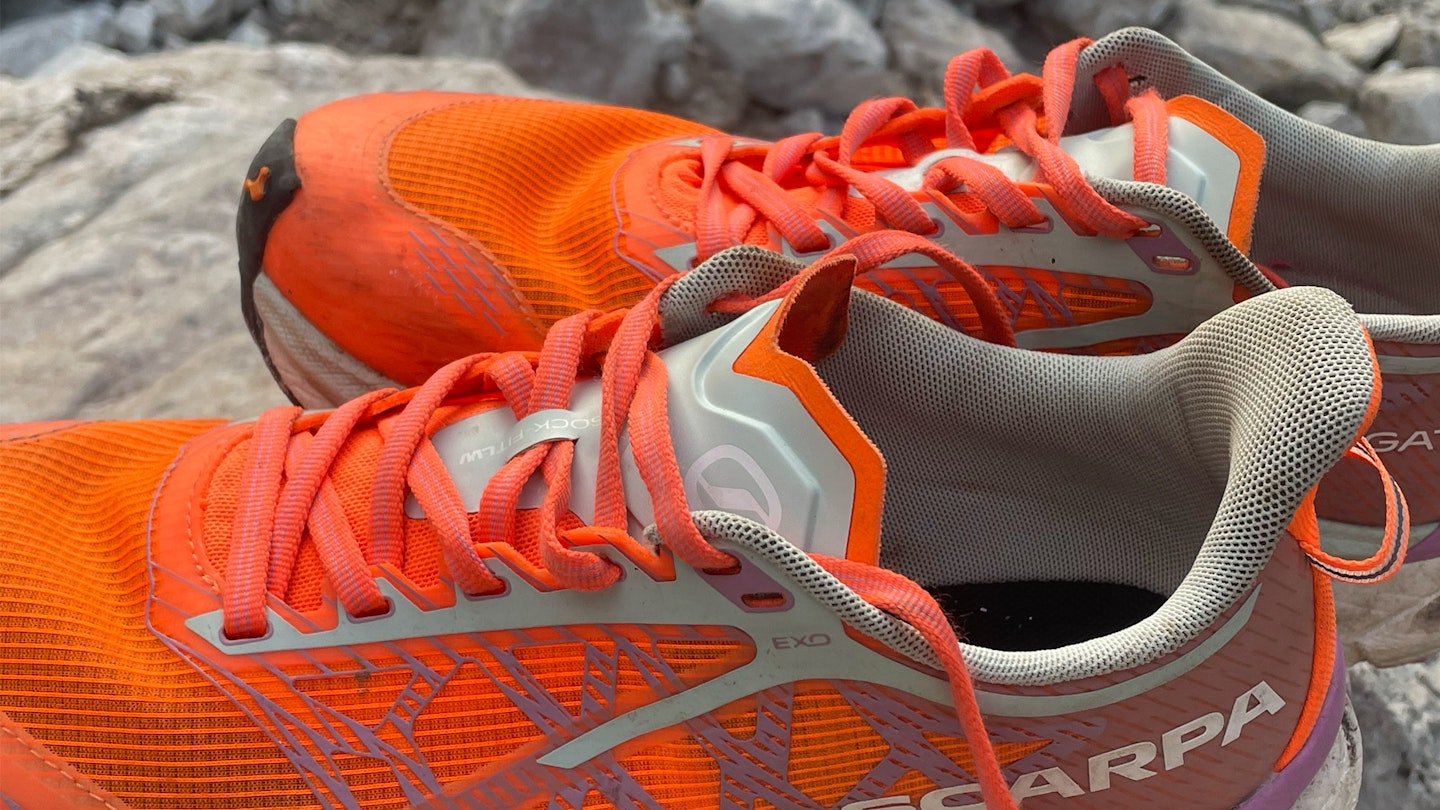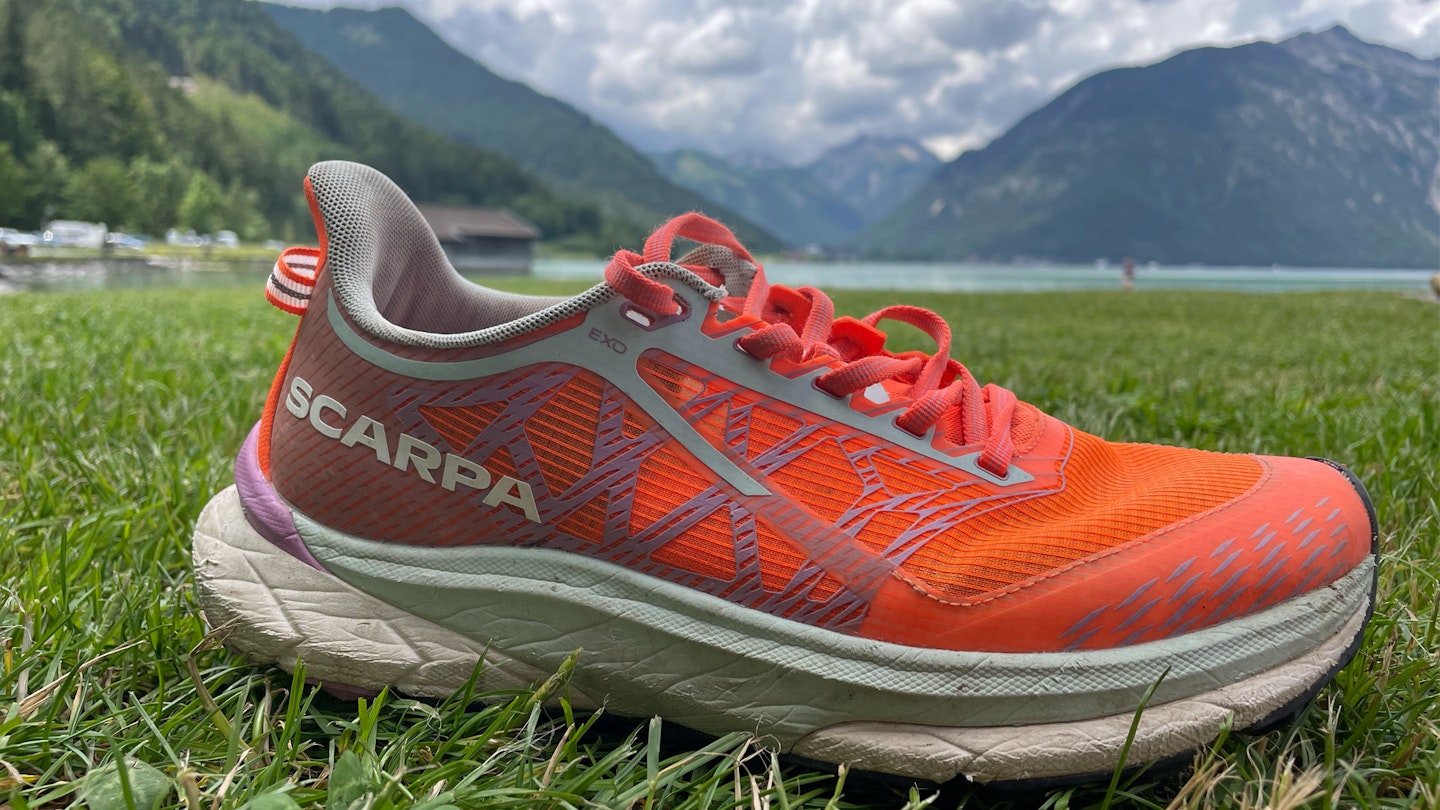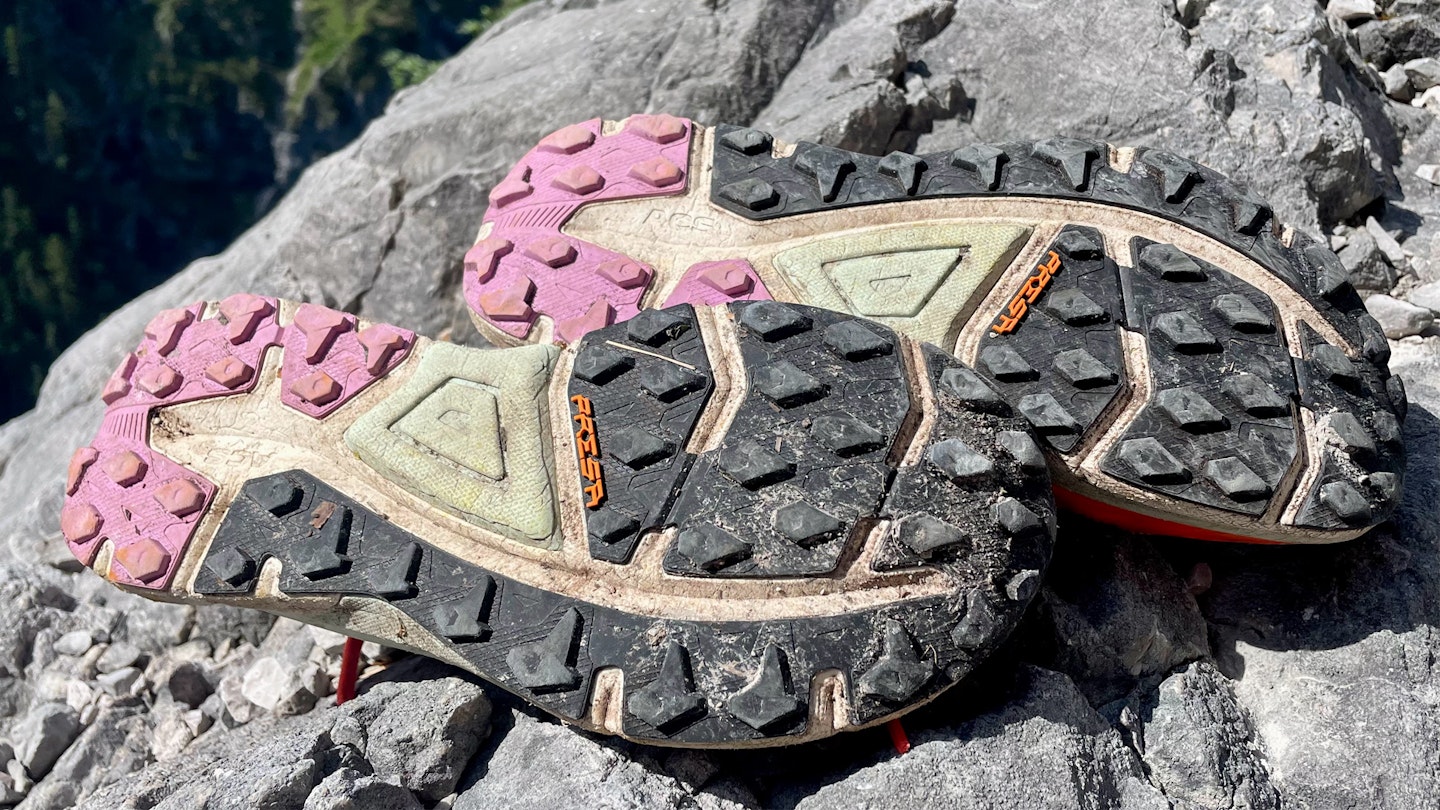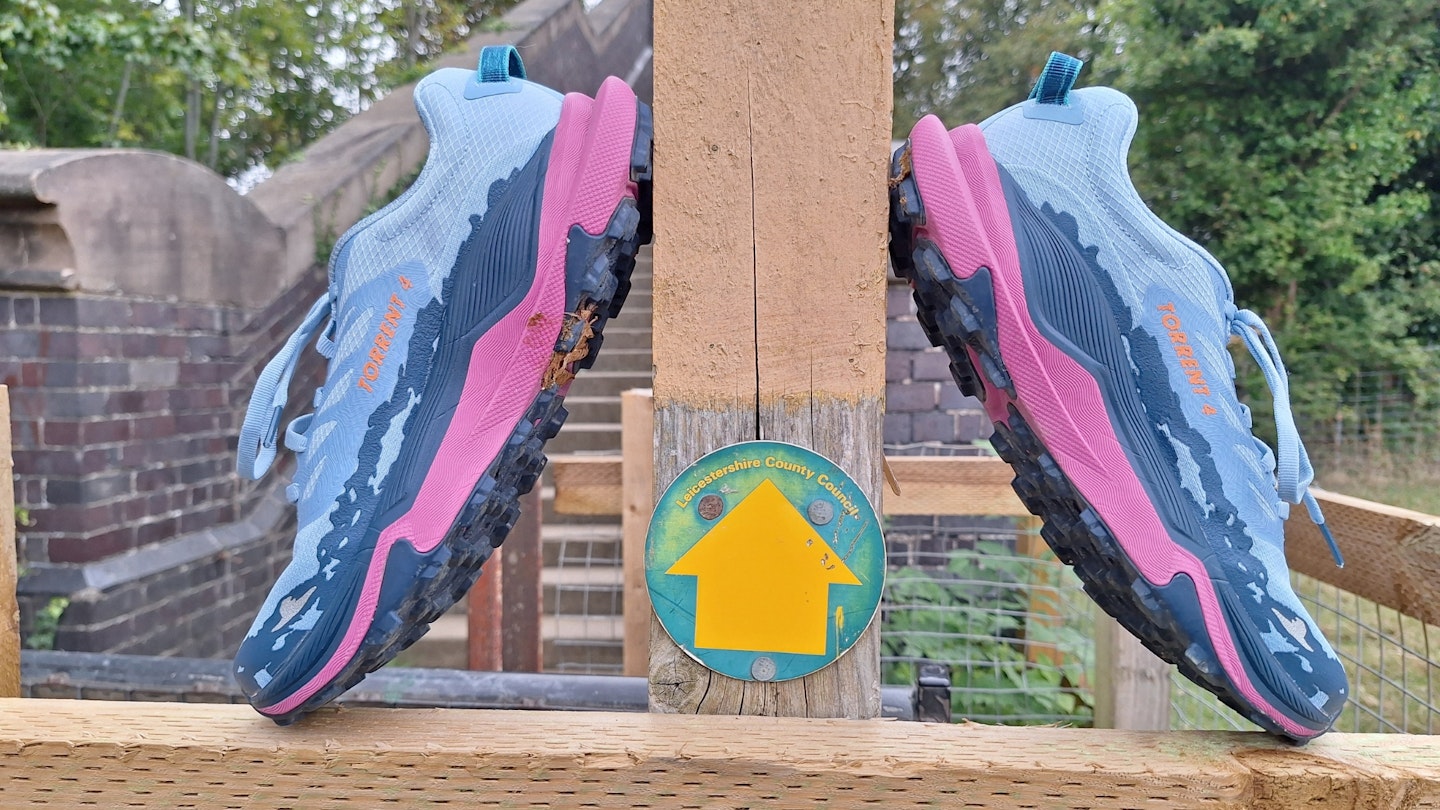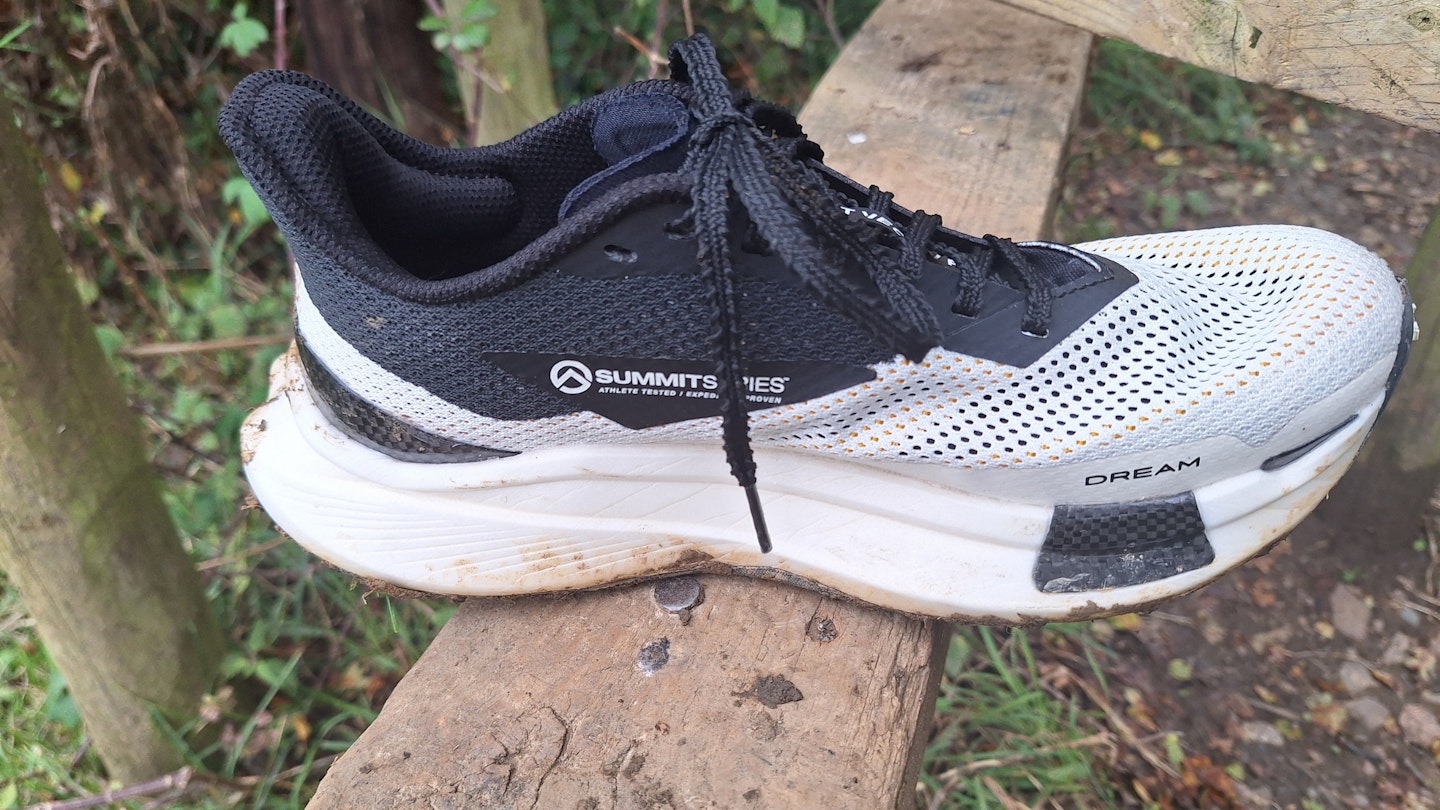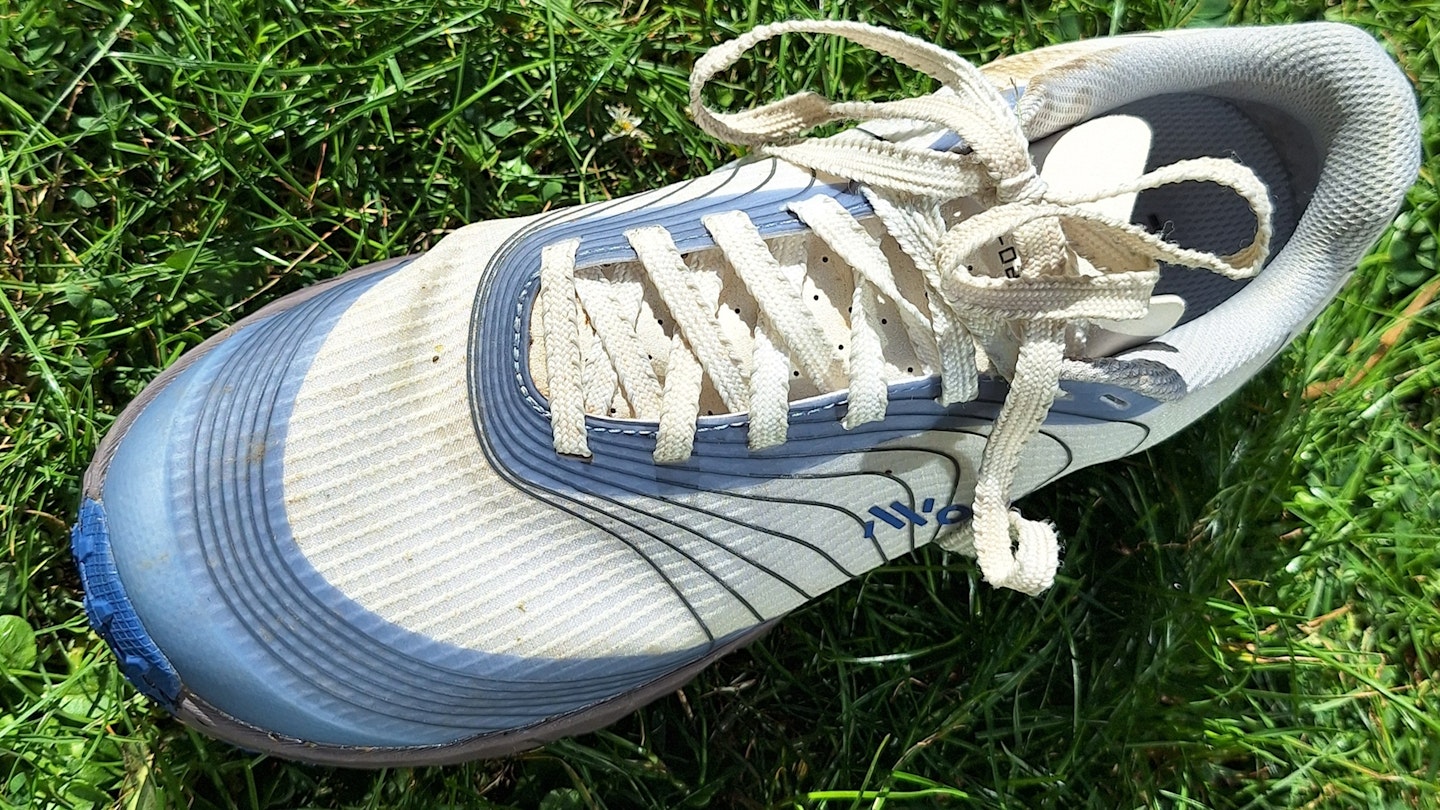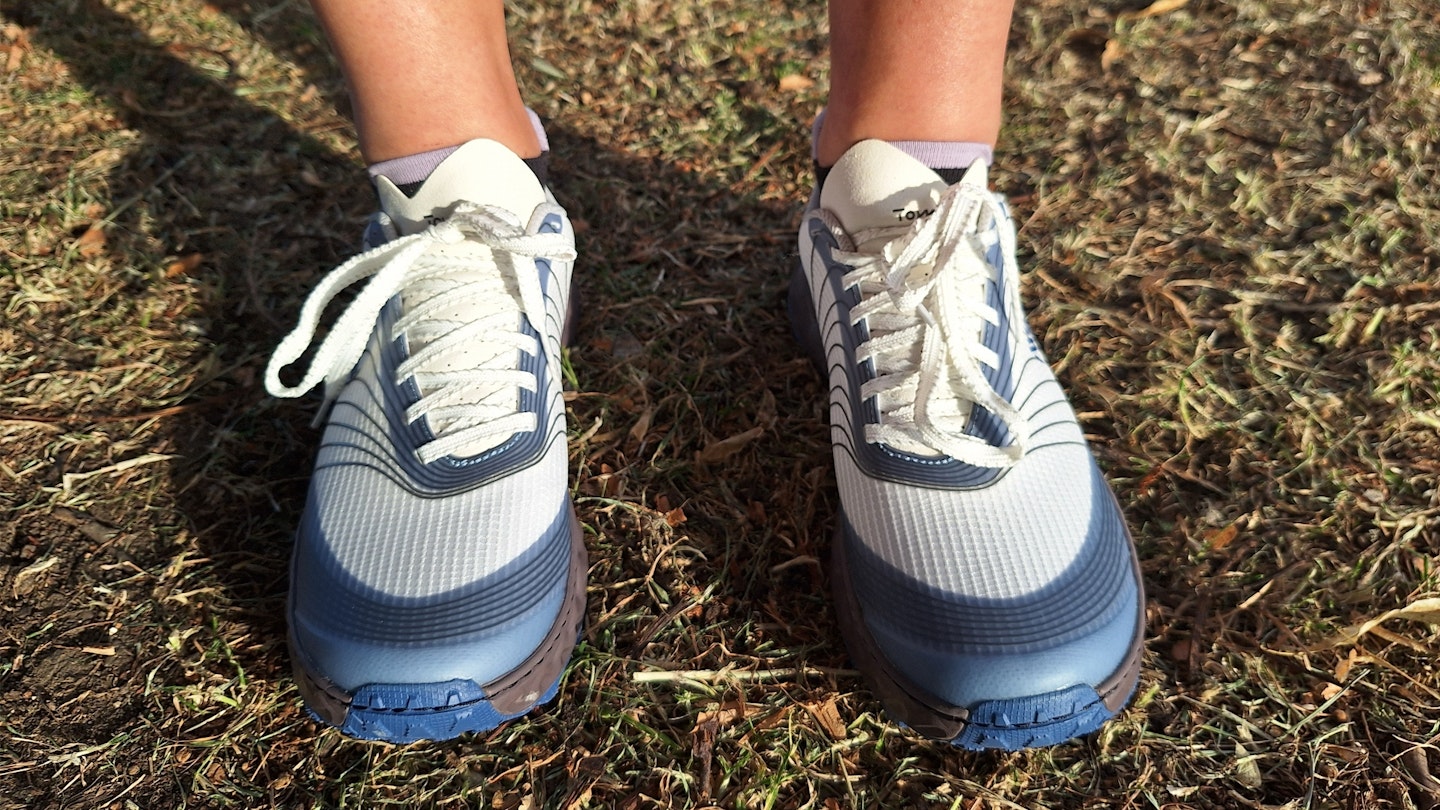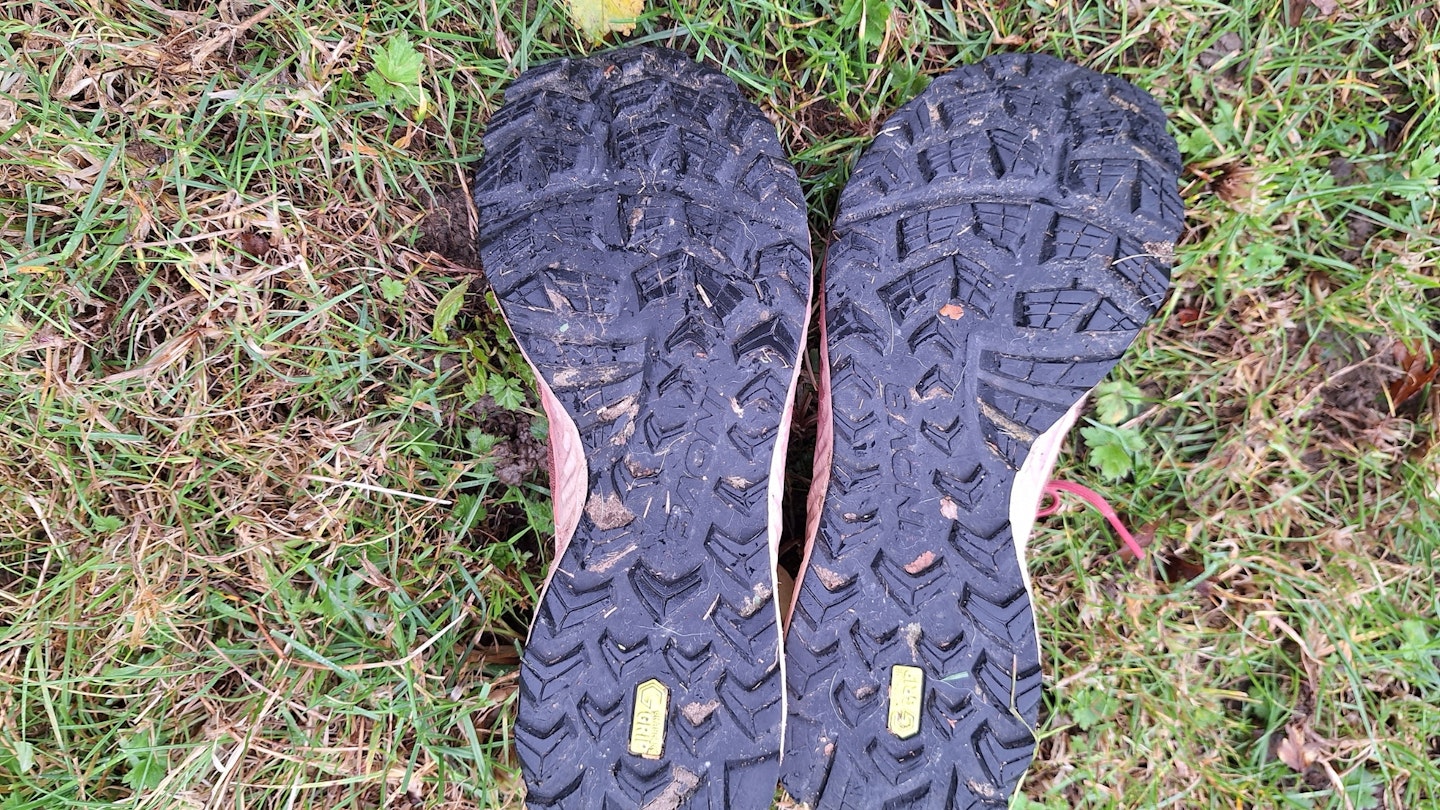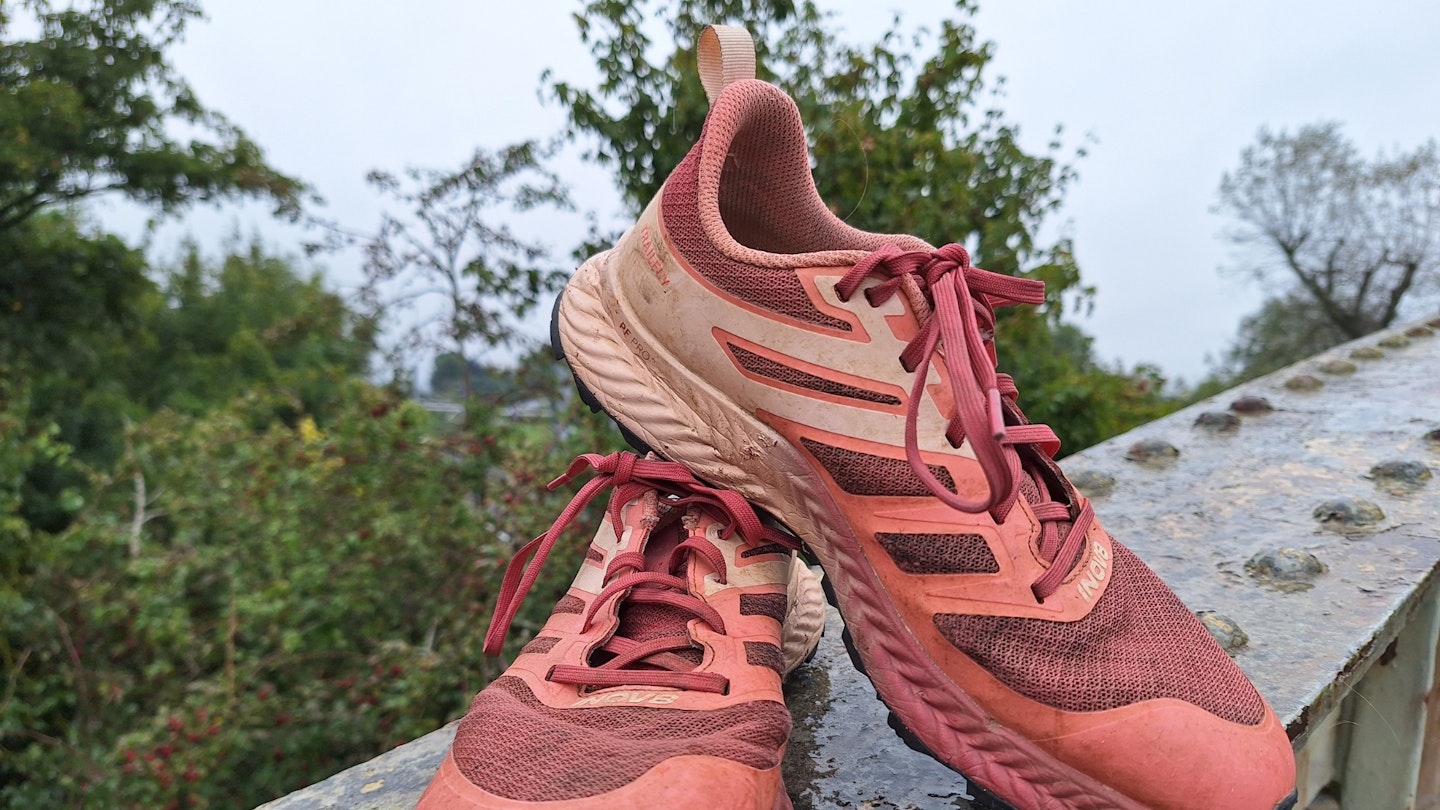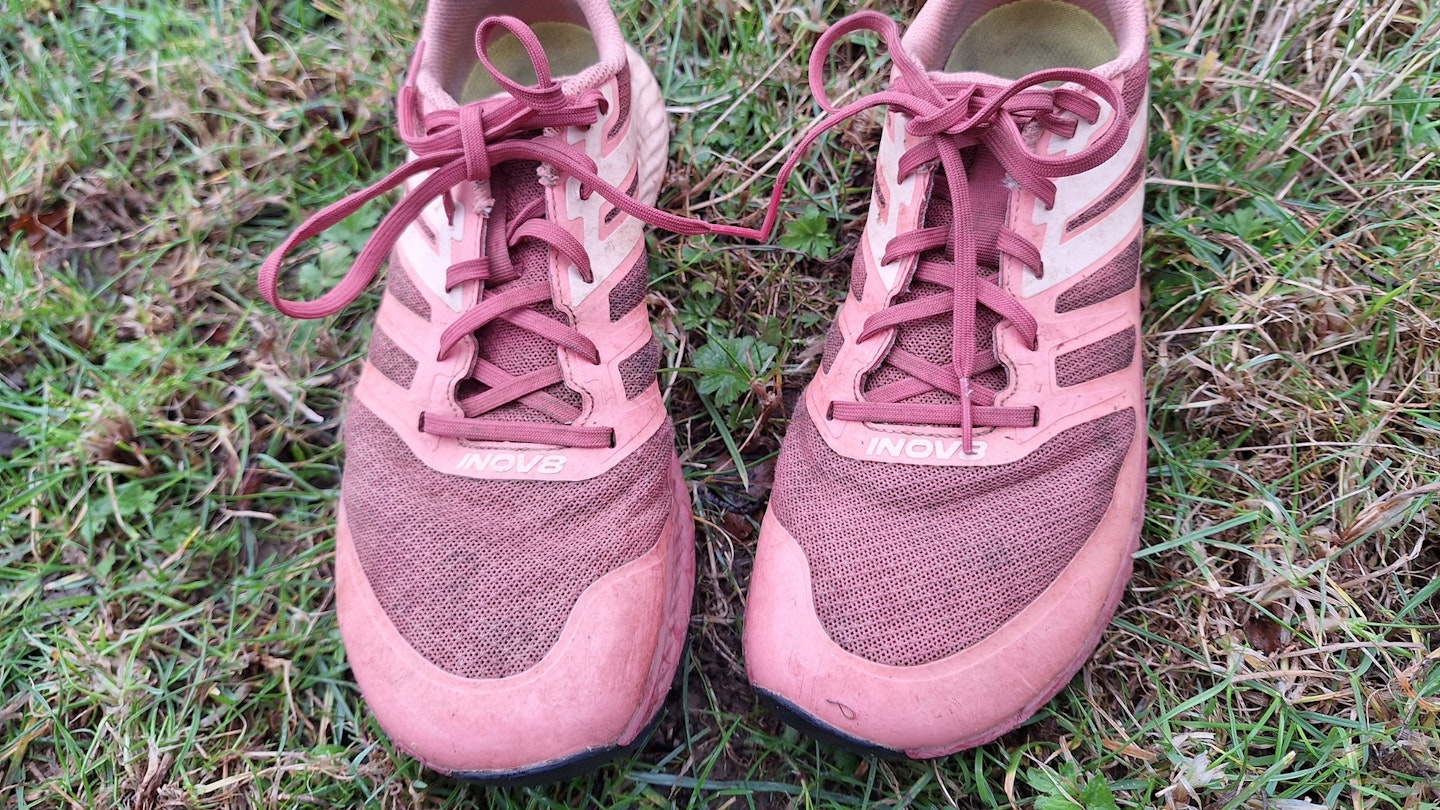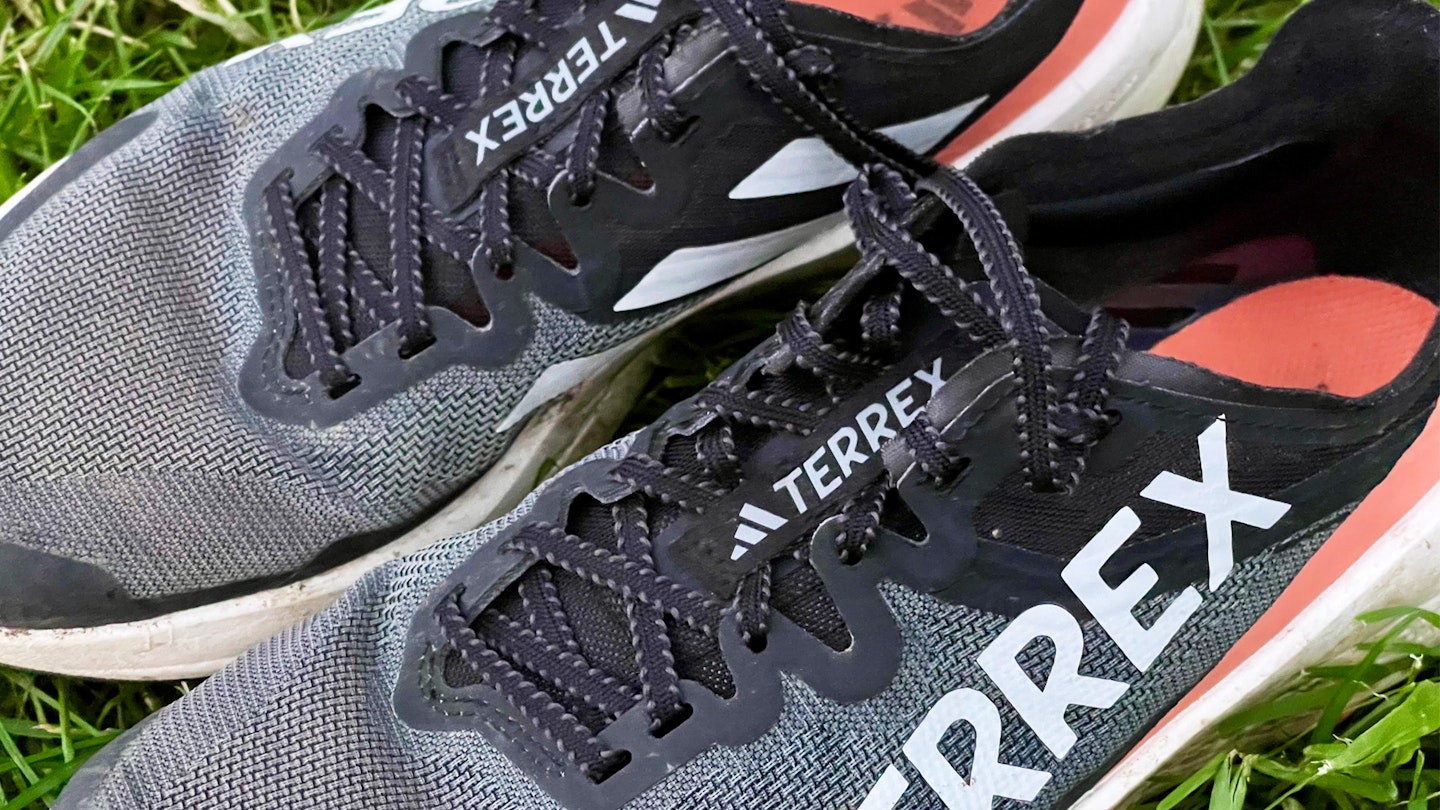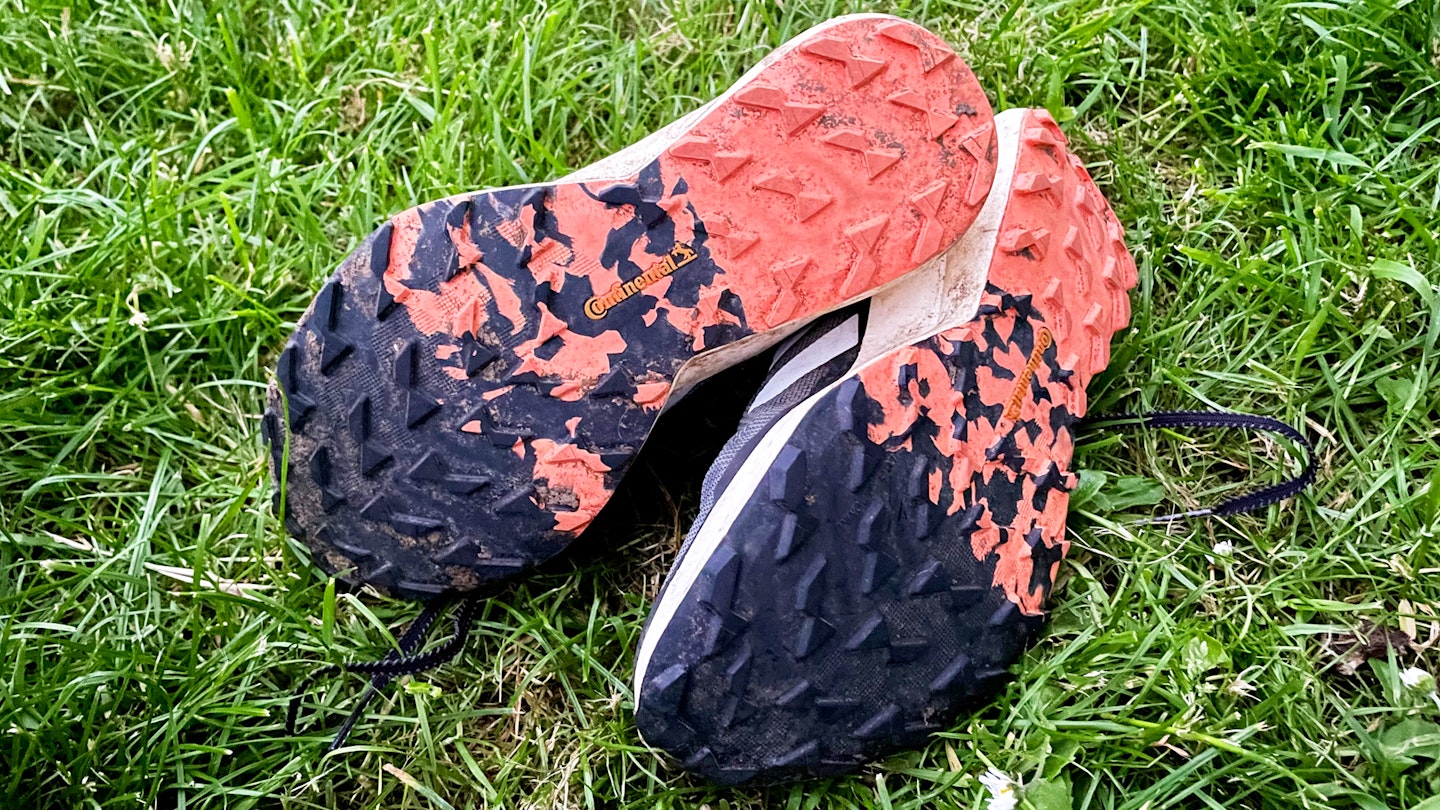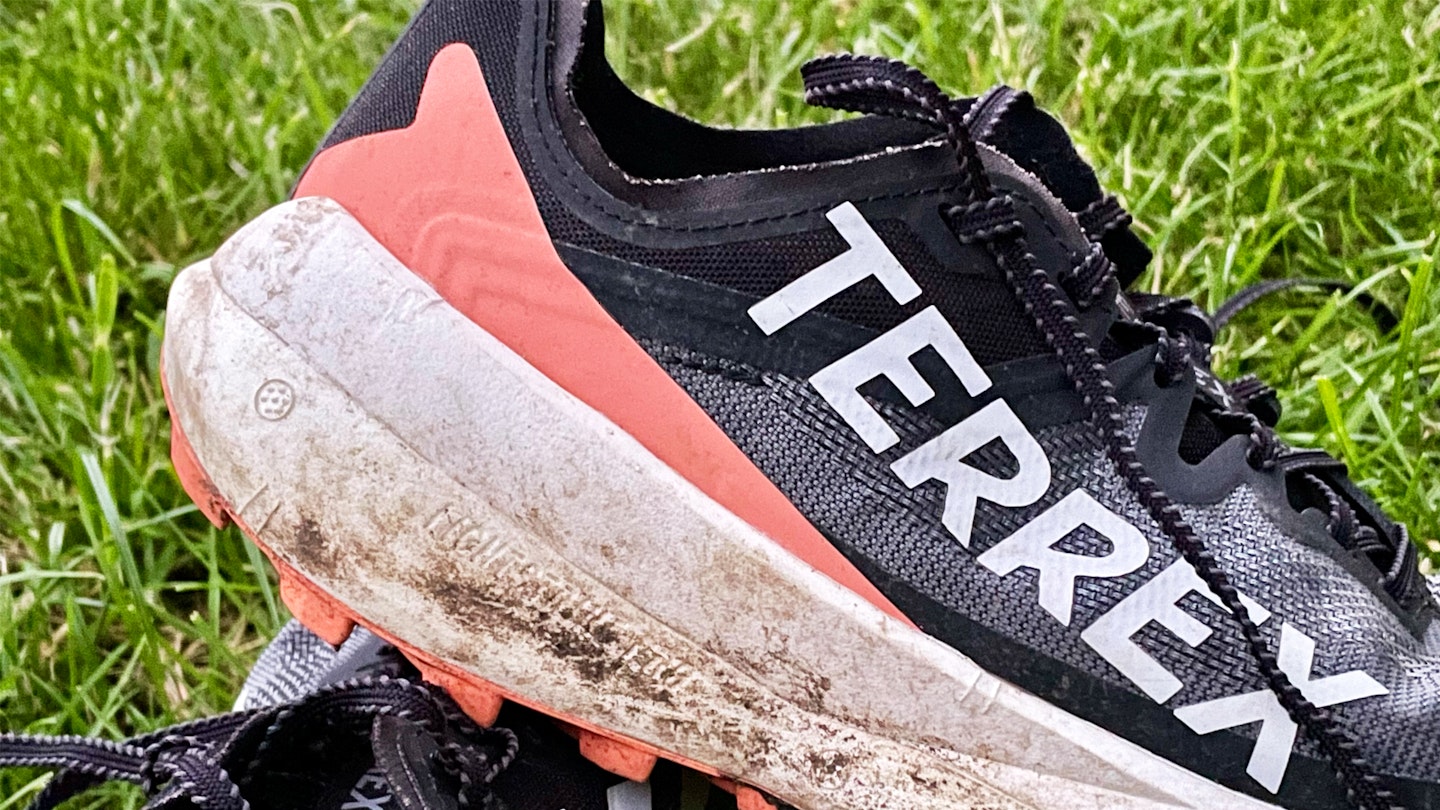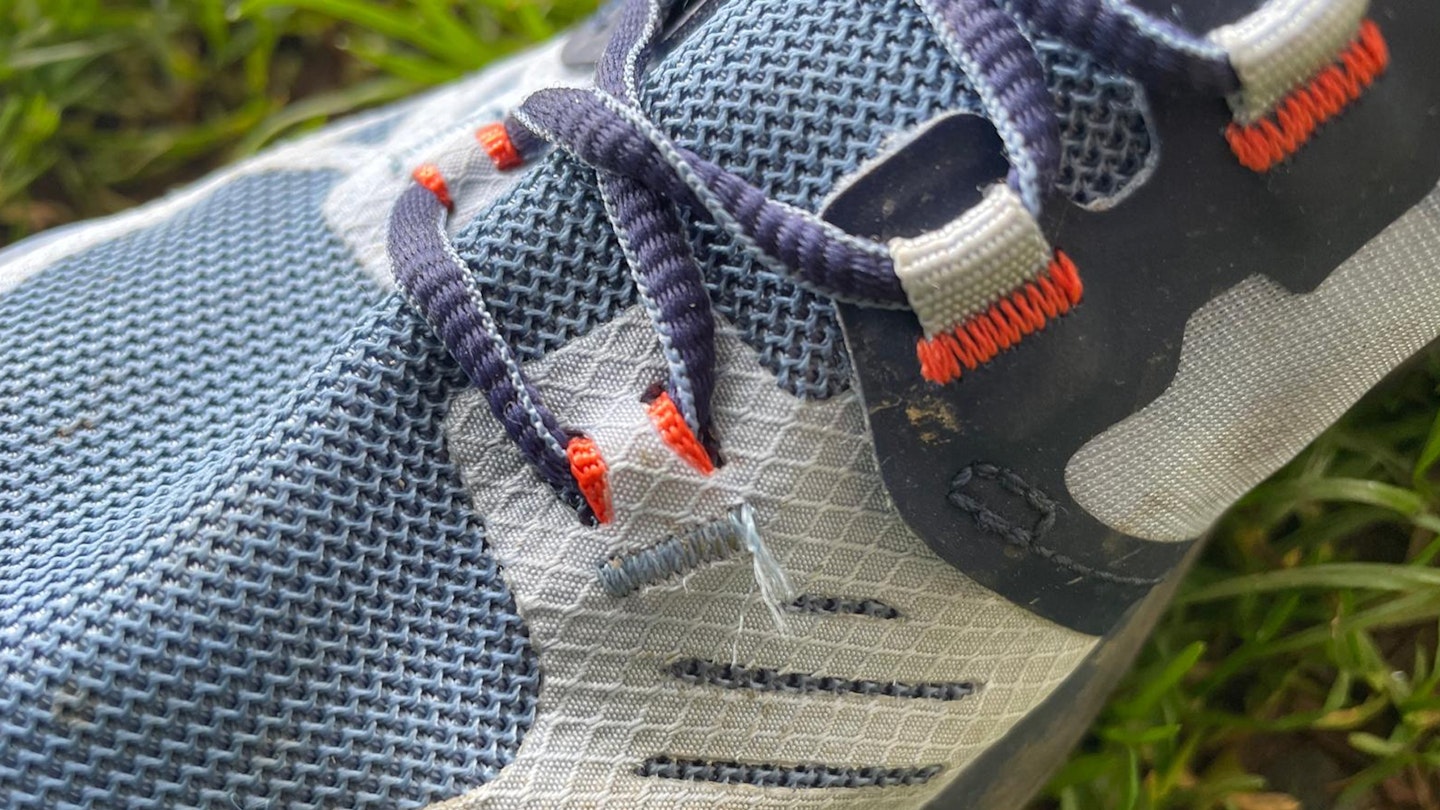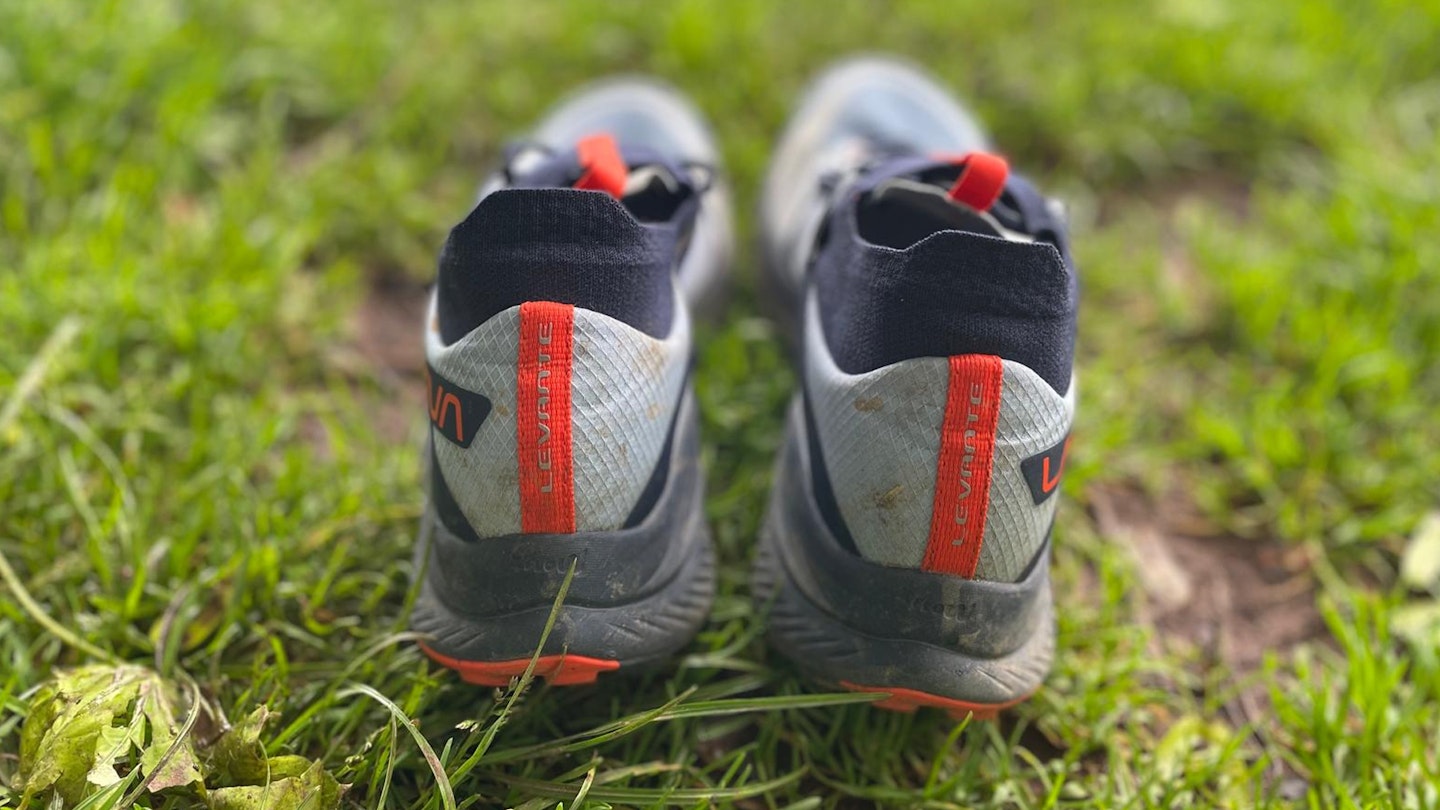If there’s one thing women know about outdoor gear, it’s that "shrink it and pink it" doesn’t cut it anymore. Gone are the days of trail running shoes that are just smaller, rosier versions of men’s models—thankfully. But while the industry has made strides (hAH!) in developing female-forward footwear, finding the perfect pair for your off-road adventures can still feel like hunting for a needle in a haystack.
We all know the scene: staring at the shop wall (or, more likely, scrolling endlessly through amazon's outdoor section), overwhelmed by terms like “dual-density midsoles” and “rock plates,” while hoping whatever you pick won’t betray you halfway up a scree slope.
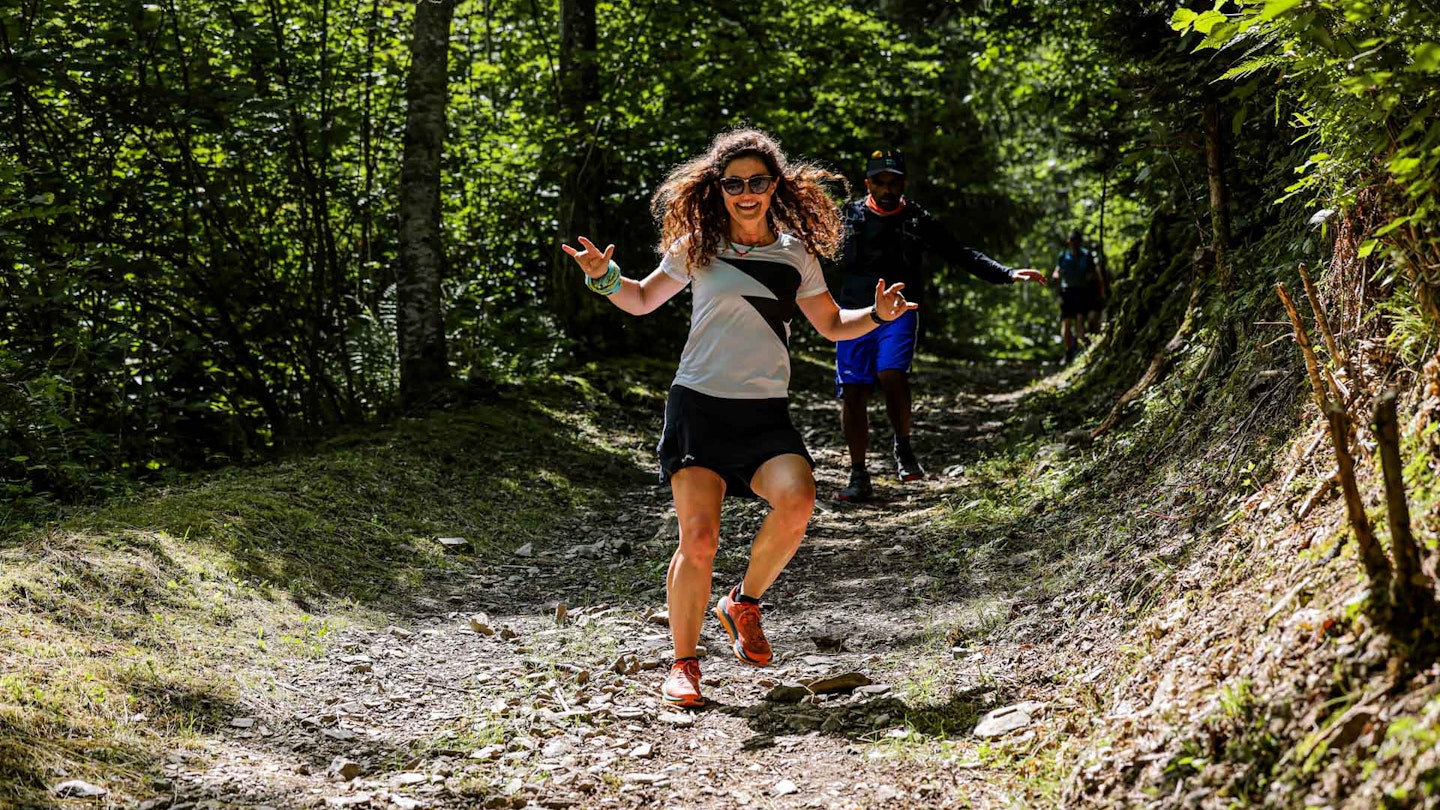
The truth is, women's feet aren’t just scaled-down versions of men’s; they’re shaped differently. And the best trail running shoes for women will address a whole raft of considerations, from a narrower last to extra midfoot support. They need to balance comfort with performance, grip with flexibility, and—most importantly—make you feel invincible, whether you’re tackling your first trail 5K or smashing through a technical mountain ultra.
For this group test, we’ve put each pair through their paces—quite literally. From cushioned road to trail shoes that soothe tired feet after a long run to aggressive designs that dig into loose terrain like claws. Our amazing testing team has covered the full range of options to make sure you can find the perfect choice.
What are the best trail running shoes for women?

Best in test: Scarpa Spin Planet
Best value: Merrell Morphlite
Best for long distances: Dynafit Ultra DNA
Best road to trail shoe: Scarpa Golden Gate 2 ATR
How we tested the best ladies trail running shoes
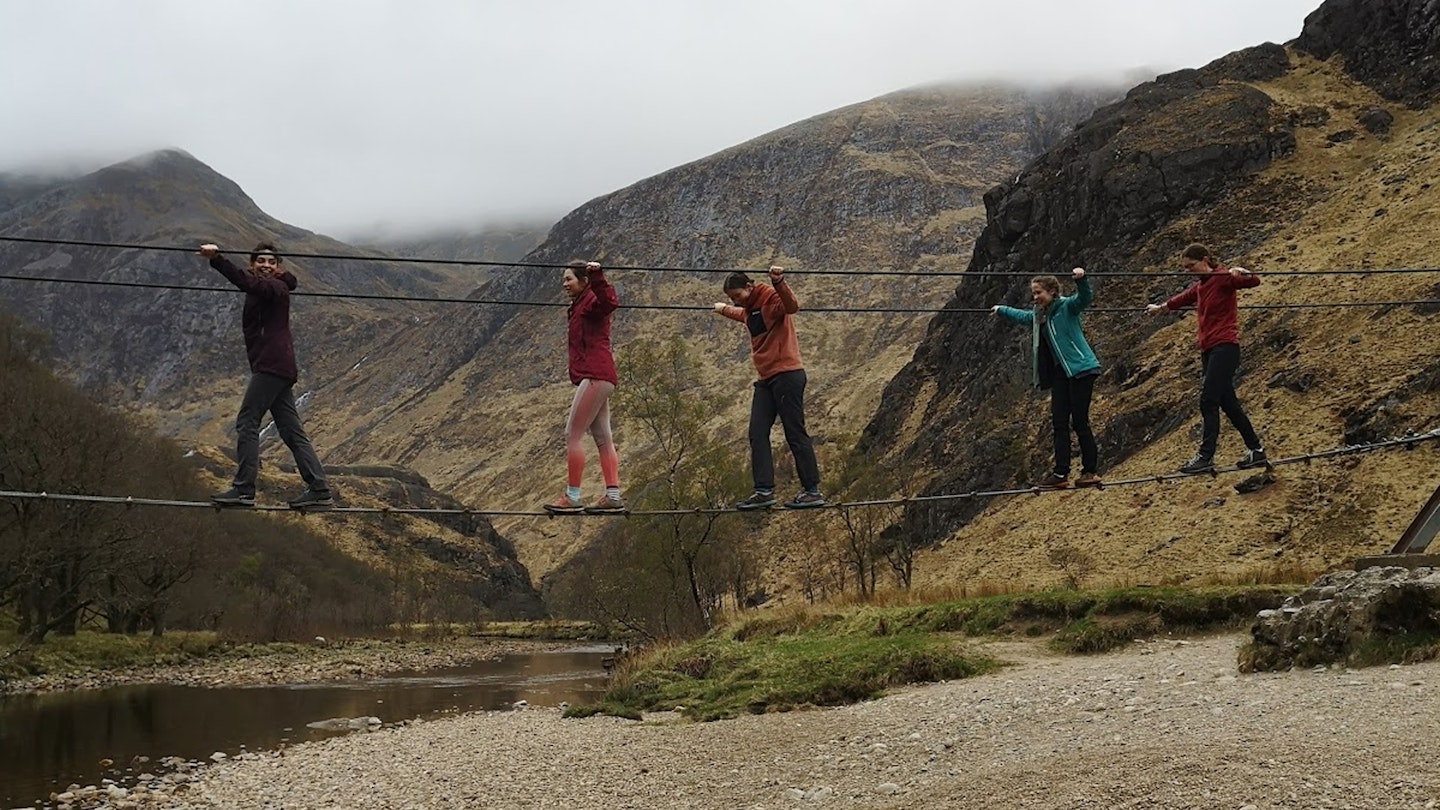
You might be surprised to learn that, in order to test the best trail running shoes for women, we went ahead and enlisted a group of female trail runners. LFTO is blessed with a Scotland-based contingent of testers who work together to use and abuse a range of gear across the highlands. They'll test shoes in groups and individually, comparing notes and ranking the best performing pairs for us – and they're all women, because there's no way in hell a group of men could be this organised.
Our Scottish testing team includes Lily Snowden, Meg Durkin, Lara Chapman, Fran Brosnahan, and Lottie Spillet, whose full-length reviews can be found below if you want any more details on these trainers. This team tested half of the shoes in this list, while the other half was single-handedly demolished by our resident expert Lily Canter: professional coach, ultra runner, and founder of the women's running club Great Bowden Runners.
Testing wasn’t just a case of lacing up and hoping for the best. We ran these shoes across every kind of terrain – thick mud, slippery rocks, root-covered trails, and hardpack – to see how they handled real-world conditions.
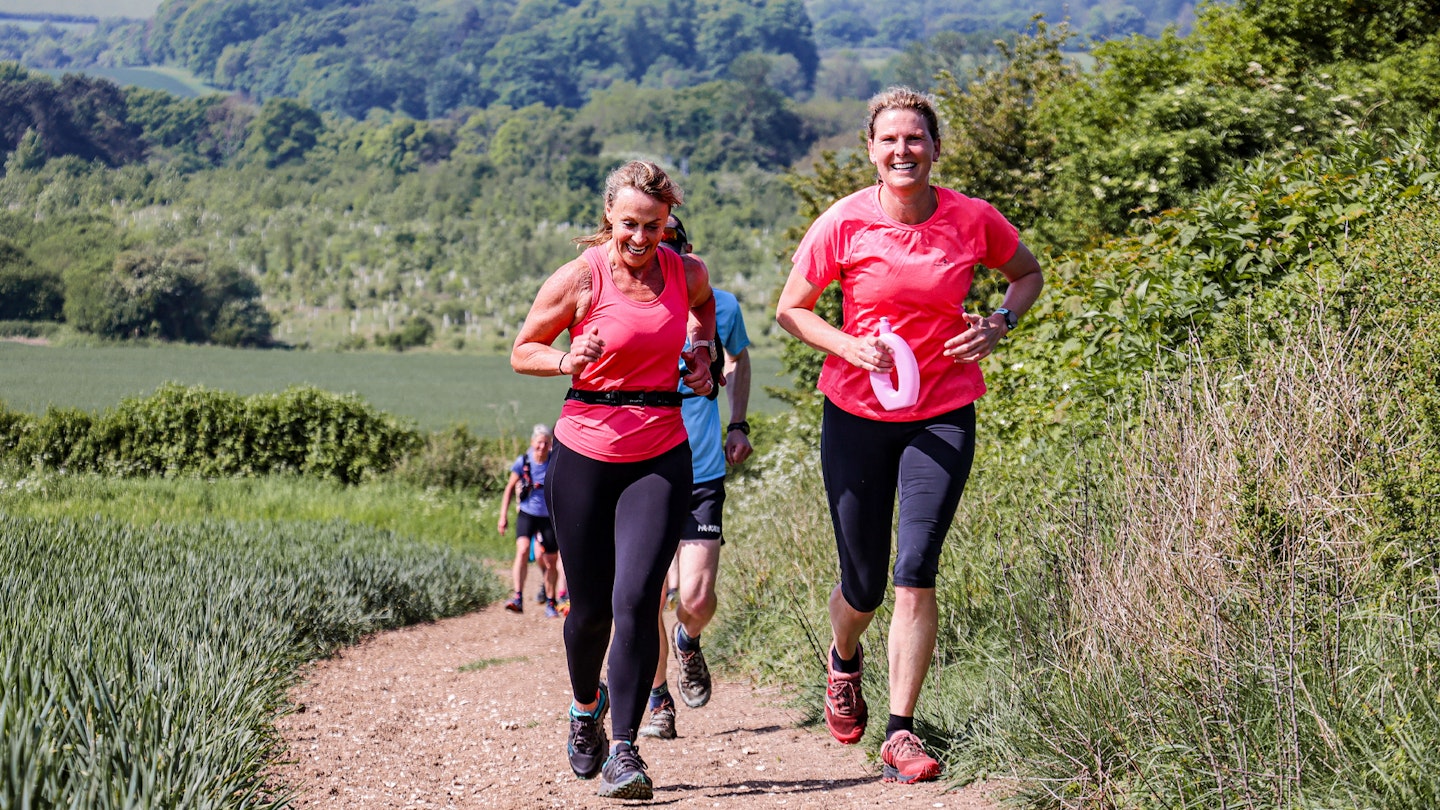
We scrutinised grip and outsole performance, from lug depth to rubber compound, checking which shoes could claw their way up steep hills or keep us upright on wet descents. Fit and comfort were put under the microscope, assessing toe box room, midfoot hold, arch support, and whether the cushioning felt plush or responsive. We also considered drop height, testing everything from low-drop minimal shoes to high-drop cushioned cruisers.
Weatherproofing was another key factor. Waterproof shoes were put through rain, puddles, and boggy ground, while breathable mesh models were tested in warm conditions to see if they kept feet cool and blister-free.
Durability and protection were equally important – tough uppers, reinforced toe caps, and rock plates all played a role in how well a shoe could handle rough, technical ground without falling apart. Finally, weight, price, and overall value were weighed up (HA!), ensuring that every shoe in this roundup was truly worth considering.
The best trail running shoes for women reviewed
The Scarpa Spin Planet combines strong sustainability credentials with solid trail performance, making it a standout option for environmentally conscious runners. Crafted from recycled materials—right down to its 100% recycled upper and 45% recycled EVA midsole—this shoe proves eco-friendliness can still deliver on comfort and durability.
Tested across varied conditions, including a torrential 10km race, the Spin Planet excelled in drainage, allowing water to pass through the upper without that dreaded squelching sensation. Its breathable EXO upper also worked wonders on warm days, while the gusseted tongue did a good job of keeping debris out (once adjusted). However, the fluffy laces easily attracted seeds and dirt, which could be frustrating on grassy runs.
On the trail, the shoe offers a bouncy, responsive ride thanks to its layered midsole, with firm cushioning on top and shock-absorbing foam beneath. The multi-zoned Presa outsole performs well on mixed terrain, providing reliable traction on stony paths and grassy fields. That said, the moderate lugs aren’t ideal for heavy mud, where clogging can weigh you down. The slightly narrow toe box might also limit comfort on ultra distances, especially for runners with broader feet.
Overall, the Spin Planet is a versatile and durable choice for medium-difficulty trails and eco-minded runners, though it may not be the best fit for mud-heavy runs or those requiring a wider fit. If you loved the Scarpa Spin Infinity, this greener sibling offers a comparable ride with the bonus of improved sustainability.
Pros
- Strong sustainability credentials
- Excellent drainage
- Comfortable fit for long runs
Cons
- Sticky laces attract debris
- Unusual tongue fitting
| RRP: | £150 / $183 |
| Men’s sizes (UK): | 6.5 to 13 |
| Women’s sizes (UK): | 3.5 to 8 |
| Weight: | 290g / 10.2 oz |
| Drop: | 4mm |
| Stack height: | 28/24mm |
| Lug depth: | 4.5mm |
| Waterproof version: | No |
The Merrell Morphlite is a solid option for new trail runners seeking an affordable hybrid shoe that transitions well between road and trail. Over a month of testing on Surrey’s muddy trails and woodland paths, the Morphlite impressed with its excellent grip and breathability, performing well during quick changes in direction and on mixed surfaces.
At just 215g per shoe, the Morphlite feels light and bouncy, but this comes at the cost of comfort. Its firm FloatPro Foam midsole lacks the cushioning needed for longer runs, causing discomfort over sharp terrain or extended distances. The shoe’s flat profile also promotes overpronation, making it less suitable for runners with ankle or tendon vulnerabilities.
The outsole features a mix of 3mm perimeter lugs and 2mm multi-surface lugs, striking a balance between road and trail traction. While not fully waterproof, the double-lined toe box and splashproof upper offer a decent defence against wet conditions. Sustainability-conscious runners will appreciate the use of recycled materials, including 100% recycled laces and mesh components, though this shoe doesn’t fall under Merrell’s dedicated eco-friendly range.
If you’re starting out on trails or sticking to shorter distances, the Morphlite delivers value and reliable grip at an accessible price point. For those eyeing longer or more technical runs, a more cushioned option might be worth considering.
Pros
- Sole transfers well from road to trail
- Splashproof upper
- Good breathability
- Great grip when changing direction
- Excellent value
Cons
- Flat footed style encourages overpronation
- Padding doesn't stack up well on sharp terrain
| RRP: | £89.99 / $110.15 |
| Women's sizes (UK) | 4–9 |
| Men's sizes (UK) | 7–14 |
| Weight (UK size 6.5) | 215g/7.6oz per shoe |
| Drop | 6.5mm |
| Stack height | 26.5mm – 20.0mm |
| Lugs | 3mm (perimeter) 2mm (multi-surface) |
| Waterproof version | No |
The Dynafit Ultra DNA is, as the name suggests, an ultra running shoe designed in collaboration with elite runner Hannes Namberger, and it lives up to its high-performance credentials. Tested on the diverse terrains of the Peak District, Lancashire moorlands, and Edinburgh’s Arthur’s Seat, this shoe impressed us with its uphill prowess and energy conservation, thanks to the responsive “speed+” midsole. While its 35mm stack height may not suit everyone, the shoe delivered a smooth and enjoyable run across various distances, making even casual runners feel fitter than they are.
The Vibram Litebase Megagrip outsole provided excellent grip on rocky and muddy trails, though its thicker sole felt less precise on technical scrambles. The lugs aren’t as deep as some competitors, but they held up well on wet, uneven terrain. The lightweight, sock-like upper was breathable and comfortable, with ripstop fabric enhancing durability. While not waterproof, it resisted water effectively during spring runs in Scotland.
Key features include a dual speed lacing system, which allowed for quick adjustments and minimised pressure points—a game-changer for blister-prone feet. Additional insoles for volume adjustment were a thoughtful touch, although the rear loop proved too small for practical use. Sustainability efforts include 25% recycled materials and a commitment to Bluesign standards, making the Ultra DNA a durable and eco-conscious choice.
Pros
- Great uphill performance
- Great energy return
- Grippy on all terrain
Cons
- Pricey
- 35mm stack height won't suit everyone
| RRP: | £185 / $226.45 |
| Unisex sizes- 3-13 (UK): | 3-13 (UK) |
| Weight: | 300g (size 42) |
| Drop: | 8mm |
| Stack height: | 35mm |
| Lugs: | 3.5mm |
| Waterproof version: | Yes |
The Scarpa Golden Gate 2 ATR is a hybrid trail running shoe that seamlessly transitions from tarmac to trails. Over two months of testing, these shoes excelled on everything from Edinburgh’s urban paths to the rocky scree of the Austrian Alps. While best suited to drier, rocky conditions, they performed reliably on gravel tracks and woodland paths, making them a versatile choice for runners tackling mixed terrains.
Scarpa’s updated design improves durability with a reinforced upper and introduces a breathable SockFit tongue, which wraps snugly around the foot for added stability. The Active Cushioning System midsole delivers exceptional comfort and responsiveness, with a rocker that propels you forward on roads and smooth trails. Although the cushioning sacrifices precision on steep technical ground, the shoes handled rocky terrain admirably—albeit at a slower pace.
The PRESA TRN-07 outsole with 4mm lugs offers great grip on most surfaces, though British mud and long-term durability on sharp rocks pose minor challenges. These shoes shine on medium distances, providing enough cushioning to reduce strain while maintaining an energy-saving, bouncy stride. Sustainability gets a nod too, with Scarpa’s use of bio-based uppers, water-dyed frames, and vegan-friendly materials.
If you’re after a reliable hybrid shoe for short to mid-distance adventures, the Golden Gate 2 ATR offers comfort, style, and confidence for all but the muddiest runs. Just be mindful of tread wear if you’re tackling rugged, high-mileage routes.
Pros
- Excellent performance on both road and trail
- Comfortable over medium to high distances
- Great bounce and propulsion
Cons
- Dubious durability over rocky terrain
| RRP: | £145.95 / $178.65 |
| Women’s sizes (UK): | 3-8 |
| Men’s sizes (UK): | 6-13 |
| Drop: | 4mm |
| Stack height: | 28mm/24mm |
| Lugs: | 4mm |
| Weight: | 430g / 15oz per size 38 |
The Hoka Torrent 4 offers impressive value at half the price of most Hoka models. It's also a decent upgrade from the Torrent 3, with one or two exceptions.
Sporting a fairly springy EVA midsole and increased stack height, it strikes a satisfying balance between cushioning and speed. The lightweight design, combined with subtle midfoot rocker geometry, performed well on technical terrain, making it stable and grounded. However, the reworked 5mm lugs struggled with grip on gravel and wet pavements, and we started questioning the Torrent 4's durability when some outsole wear appeared after just a few runs.
The single-layer mesh upper is breathable and reinforced with prehistoric-style rubber patterns, while the cushioned heel collar and gusseted tongue add plenty of comfort. Fit remains a mixed bag: the shoe felt slightly large, causing some foot sliding during runs, which might lead to blisters over ultra distances.
Tested on wet fields, muddy tracks, and hill reps, the Torrent 4 delivered solid performance for speedwork and middle-distance runs. Despite some traction and fit concerns, this affordable, lightweight trail shoe is a versatile choice for runners looking for a fair-weather (or budget-friendly) option.
Pros
- Excellent cushioning
- Responsive ride
- Improved breathability
Cons
- Underperforming traction
- Outsole lacks durability
| RRP: | £120 / $146.88 |
| Men’s sizes (UK): | 6.5 to 13.5 |
| Women’s sizes (UK): | 3.5 to 9.5 |
| Weight: | 279g / 9.8 oz |
| Drop: | 5mm |
| Stack height: | 33/28mm |
| Lugs: | 5mm |
| Waterproof version: | No |
The North Face Summit Vectiv Pro II is a significant upgrade, particularly with its repositioned carbon plate for improved comfort. The midsole, featuring supercritical EVA foam and a 3D carbon plate, shines at higher speeds, offering great propulsion and stability. While the rockered geometry felt clunky at slower paces, it came alive during tempo runs, delivering a bouncy yet stable ride even over lumpy terrain.
The seamless upper, made from 92% recycled material, adds durability and breathability. However, fit remains a drawback for those with wider feet, as even sizing up didn’t alleviate toe squashing. The internal bootie effectively keeps debris out and secures the foot, complemented by serrated laces and a padded heel collar for extra stability.
Outsole performance is mixed. The 3.5mm lugs excel on dry, hard-packed trails but struggle in mud and technical descents, making these better suited for fair-weather runs or hybrid surfaces. Sustainability is a highlight, with the brand making strides in using recycled materials, though specifics on the full environmental impact are unclear.
Tested on East Midlands trails, the Pro II showed its strengths in controlled conditions but didn’t inspire confidence in the wet. A pricey but promising option for speed-focused runners with narrower feet.
Pros
- Internal bootie protects from debris
- Serrated laces
- Comfortable propulsive ride
Cons
- Narrow fit
- Limited traction
| RRP: | £225 / $275.41 |
| Men’s sizes (UK): | 6 to 13 |
| Women’s sizes (UK): | 3 to 9 |
| Weight: | 238g / 8.4oz |
| Drop: | 6mm |
| Stack height: | 32/26mm |
| Lugs: | 3.5mm |
| Waterproof version: | No |
The standout feature of the Tomir 2.0 is its exceptional traction. The 5mm Vibram Traction Lug outsole handled mud, rocky scrambles, and wet pavement with ease, making it ideal for gnarly trails and unpredictable conditions.
The anti-slip laces are a small but invaluable improvement, keeping shoes securely tied even on long runs. Plus, the lightweight mesh upper offered great water resistance and breathability, making it suitable for wet grassy fields and keeping debris out.
However, the narrow fit—particularly in the toe box—remains a sticking point. Despite widening the midsole slightly compared to the original Tomir, runners with broader feet may still find them restrictive, especially over longer distances. For runs under 20km, the shoe offers a solid mix of stability and responsiveness, but the tight fit and 8mm drop might limit its appeal for ultra-runners.
While not the most versatile or comfortable for every foot shape, the Tomir 2.0 excels in durability and grip. If you’re tackling challenging terrain and need a shoe that can take a beating, these are a strong contender, especially if a narrow fit suits you.
Pros
- Amazing traction on all terrain
- Excellent durability
- Convenient anti-slip laces
Cons
- Narrow fit
- Heavy outer sole
| RRP: | £150 / $183.61 |
| Men’s sizes (UK): | 4 to 13 |
| Women’s sizes (UK): | 4 to 13 |
| Weight: | 288g / 10.1oz |
| Drop: | 8mm |
| Stack height: | 31/23mm |
| Lugs: | 5mm |
| Waterproof version: | No (but there is a Tomir waterproof boot) |
The Inov8 Trailfly is a standout trail shoe thanks to its foot-shaped design, featuring a wide, rounded toe box that allows natural foot expansion during long runs. It’s the first shoe I’ve worn that’s genuinely blister-free, even after 48 miles in the Hardwolds 40 race. However, the shoe’s extra padding in the tongue feels excessive for summer use, and the heel collar might be too wide for some.
Built for comfort, the Trailfly features a thicker foam midsole with a 6mm drop, offering cushioning without losing ground feel. While great on soft trails, the ride can feel harsh on hard surfaces, causing soreness over long distances. The flexible rock plate effectively shields feet from sharp rocks, but it seems to trade off some comfort on mixed terrain.
With improved graphene grip and 4mm lugs, these excel on dry and rocky trails but may falter in mud. Tested in races and training runs up to 48 miles, these shoes deliver secure traction and responsive performance. The INOV8 Renov8 scheme highlights their sustainability efforts, though transparency on carbon footprint goals could improve.
Pros
- Wide blister-free toe box
- Responsive underfoot
- Snappy performance
Cons
- Excessively padded tongue
- Less comfortable on road
| RRP: | £130 / $159.12 |
| Men’s sizes (UK): | 6 to 14 |
| Women’s sizes (UK): | 3 to 8.5 |
| Drop: | 6mm |
| Stack height: | 29/23mm |
| Lugs: | 4mm |
| Waterproof version: | No |
The Adidas Terrex Agravic Speed is designed for trail racers looking for speed and responsiveness. From the first wear, these shoes feel light and bouncy, with a combination of Lightstrike and Lightstrike Pro foam offering excellent cushioning and energy return. The upper is breathable and seamless, contributing to a light, agile feel, though it lacks water resistance, making them less ideal for wet conditions.
The shoe excels on flat or moderately technical terrain, but the lack of lateral support makes it less suitable for uneven or steep trails. The Continental rubber outsole provides good traction, though it’s more suited for dry conditions with 3mm lugs designed for linear movement.
Features like textured laces and an asymmetric tongue are a highlight, adding comfort and practicality. However, the lack of padding around the heel and ankle can cause discomfort during lateral movements, and the shoes may feel too large for those between sizes.
These shoes shine on fast, dry trails, but for more rugged terrain or wet conditions, you may want to look elsewhere. With some durability concerns, the Agravic Speed is best for shorter, faster races.
Pros
- Lightweight
- Great breathability
- Excellent responsiveness and propulsion
- Inexplicably cool looking laces
Cons
- Not much lateral support
| RRP: | £111.99 ($137.08) |
| Women's sizes (UK): | 5.5-14.5 |
| Men's sizes (UK): | 5.5-14.5 |
| Weight: | 240g/8.4oz (UK 8.5) |
| Waterproof version? | N/A |
The La Sportiva Levante is designed specifically for women, with input from the brand’s female athletes, and delivers a tailored fit that impressed during our testing in the Pentland Hills and Isle of Eigg. Its standout feature is the precise fit, with a roomy toe box and snug midfoot, though we'd recommend sizing up as the fit comes up small.
The upper’s breathable mesh offers decent protection, reinforced with ripstop material and a toe cap. While the gaiter adds functionality by keeping debris out, it initially made the shoe difficult to slip on.
Performance-wise, the Levante shines on rocky and uneven trails, with its X-Flow super foam midsole striking an excellent balance between cushioning and responsiveness. The “trail rocker” design ensures smooth heel-to-toe transitions, especially on descents, which really boosted our confidence on the trail. However, its relatively shallow lugs may struggle in deep mud, so it’s better suited for mixed terrain or drier conditions. The FriXion White outsole grips well on most surfaces, and the shoe feels stable on short road sections, thanks to its moderate stack height.
Overall, the Levante delivers a smooth, responsive ride with a female-specific fit that’s both comfortable and protective. It’s a strong choice for mixed terrain, though runners tackling very wet or muddy trails may prefer deeper-lugged alternatives. Those with wider feet should approach with caution, but for many, this will be a go-to option for trail adventures.
Pros
- Excellent heal to toe sensation
- Comfortable toe box
- Great balance of cushioning and responsiveness
- Vegan and uses recycled materials
Cons
- Not the deepest lugs for muddy terrain
- Fit comes up small
| RRP: | 121.49 / $148.71 |
| Drop: | 6mm |
| Weight: | 235g/8.3oz (women's size 38) |
| Women's sizes: | 36-43.5 |
| Stack height: | 30mm/24mm |
What to look for in women’s trail running shoes

Shopping for trail running shoes can feel a bit like dating: there are lots of choices, and you’ll want to know what you’re after before you commit. The stakes, however, are much higher—because unlike a bad date, a bad pair of shoes will stick around and ruin every run until you finally kick them out (of your kit).
Fit is everything
Women’s feet are often narrower than men’s, and the right fit can make or break a trail run. Look for models with a snug heel cup and plenty of room in the toe box—your toes need space to splay out, especially on descents, but you don’t want to be sloshing around like a lost sock. Trying shoes on in the evening (when your feet are naturally a bit swollen) can also help ensure a comfy fit for longer runs.
Get a grip
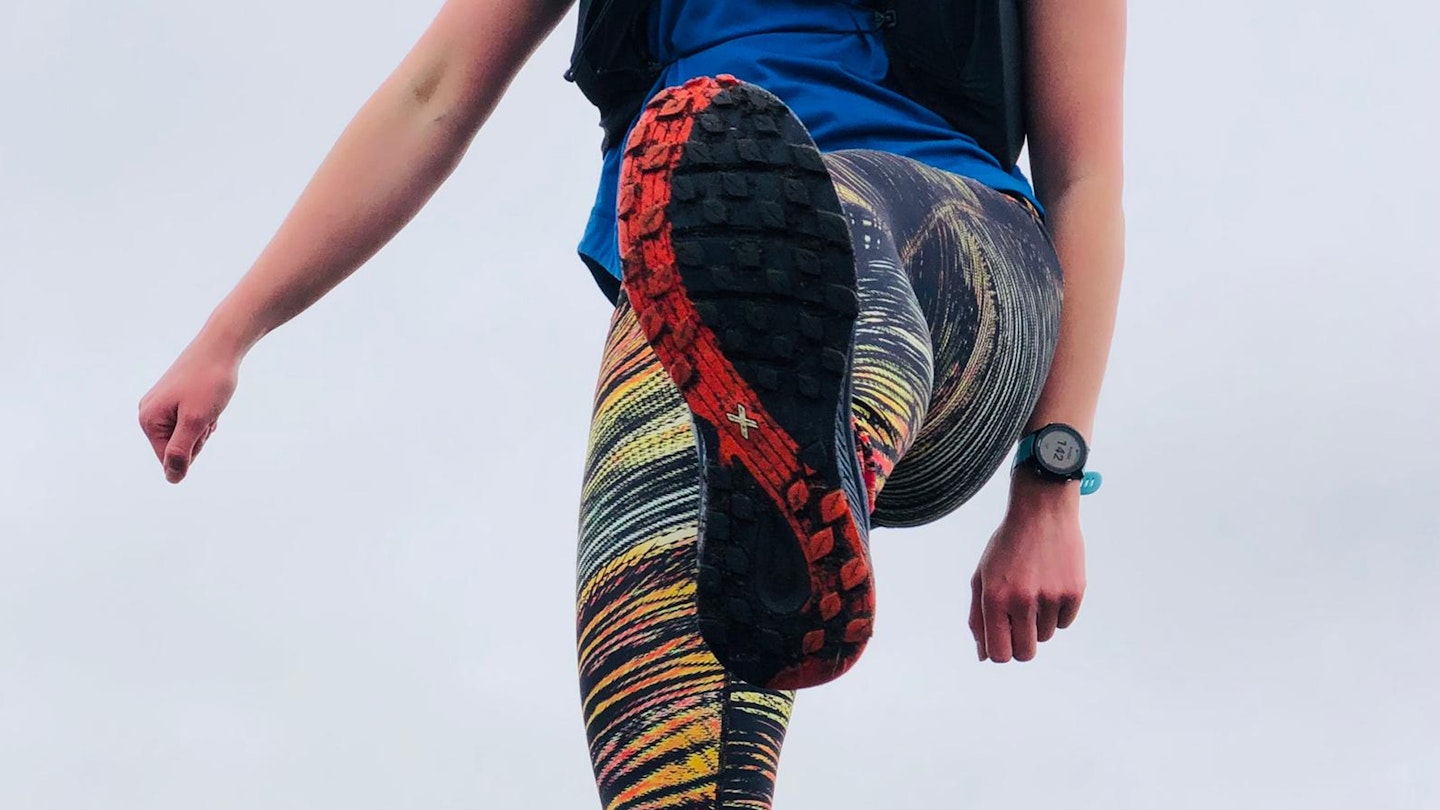
Trail surfaces range from dusty paths to greasy mud, so you’ll need a sole that can handle it all. Deep, multi-directional lugs are your best friend when tackling slippery slopes, while a sticky rubber compound is a lifesaver on rocky scrambles. If your usual route is more park than peak, go for a lighter tread to keep things breezy.
Cushioning and support
Some runners love that springy, marshmallow-like feel, while others want the ground to bite back a little. Think about your terrain: rocky trails might need extra underfoot protection, while soft forest paths might suit a minimalist shoe. And don’t forget arch support—those midfoot aches after long runs are no joke.
Waterproof vs breathable
A tough call, this one. Waterproof trail running shoes can keep your feet dry during muddy slogs but might feel like a sauna in the summer. Opt for a breathable shoe if you’re running in dry heat, and save the waterproof models for proper rainy missions.
Function over form, every time
Let’s face it: the outdoor gear world isn’t always a haven for flattering aesthetics. But these days, there’s no need to choose between a shoe that looks great and one that performs well. That said, we truly believe that the world of trail running is one in which vanity and slick style simply do not belong. Shoes are tools, a means to an end. Support, grip, and comfort come first, and if they come in the form of a garishly coloured clown-shoe-esque nightmare, then so be it! Don't let colourways distract you - they'll get dirty soon enough anyway.




